San Severino Marche has a lower part (basso) and an upper city (alto)! Indeed, the oldest part, called the Castello, is located on Monte Nero. This is where the inhabitants of the Roman Septempeda in the valley fled during the raids of the gutters. (6th century AD)
The Borgo came later and was mentioned in a document from 944. Isabelle and Erik decided to take the city walk, curious if they would see any new places. They started with the city map, and here is what they experienced:
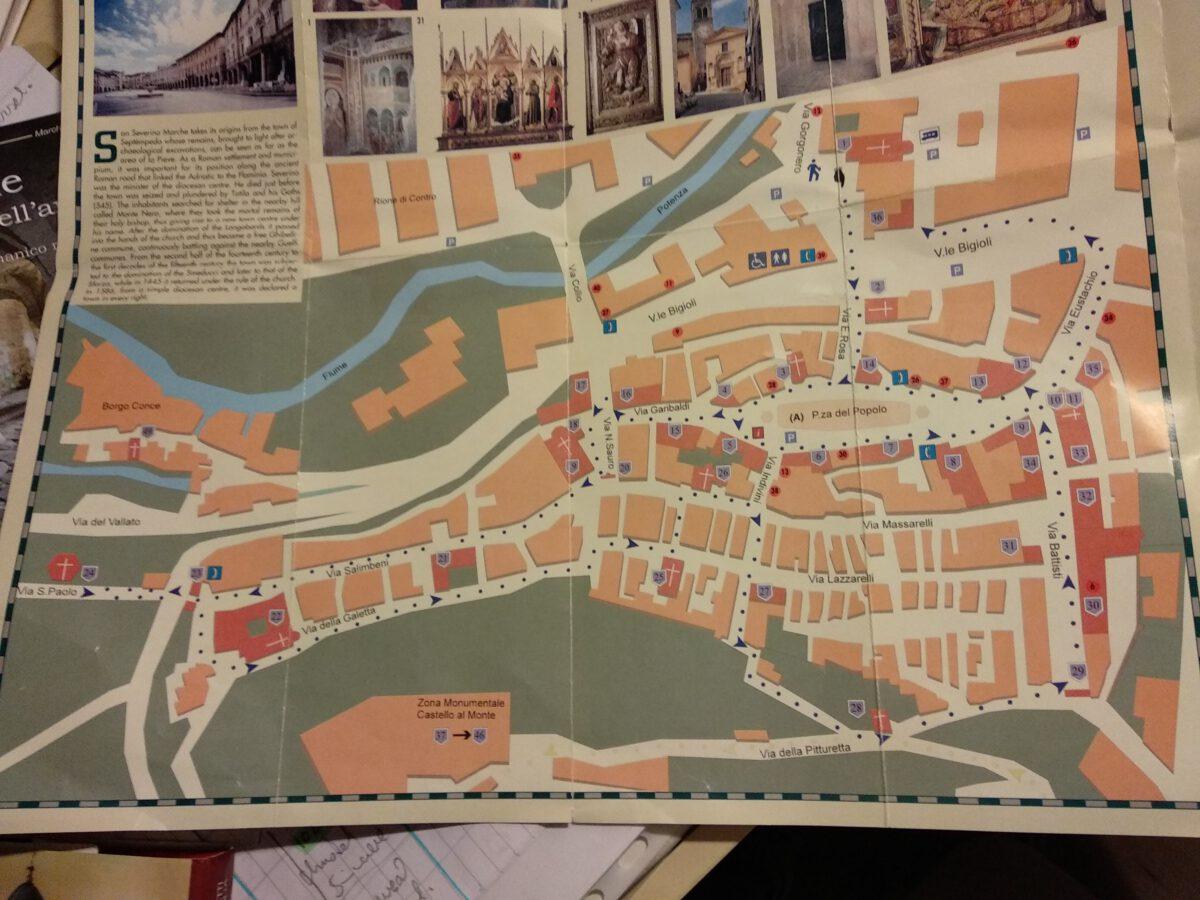
We parked in the San Domenico car park, which happened to be the starting point of the walk. To immediately arrive at the San Domenico church and monastery from the 13th-17th century. Unfortunately, the cloister and sacristy turned out to be closed, and that’s a pity because that’s where you can see the most important frescoes of Saint Catarina, painted by the brothers Jacopo and Lorenzo Salimbeni; both from San Severino Marche (15th century) and best known for their Gothic works in Le Marche and Umbria. Their most beautiful work can probably be admired in Urbino, the church itself had a special crucifix on the left at the entrance and at the altar a painting by the Umbrian painter Bernardino di Mariotto depicting La Madonna con il Bimbo in Gloria.


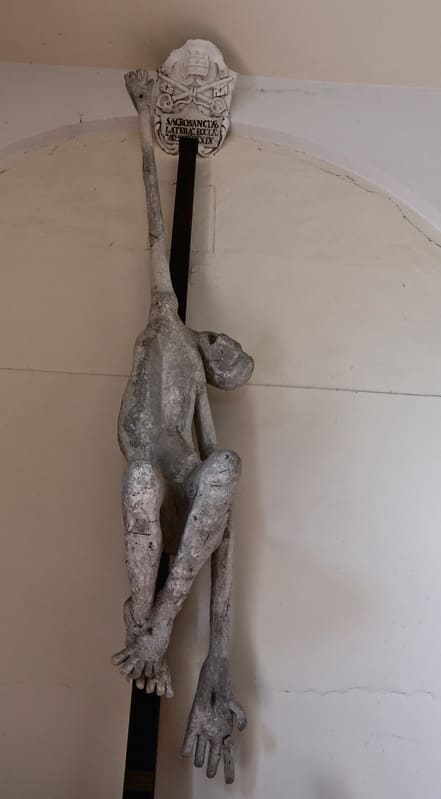
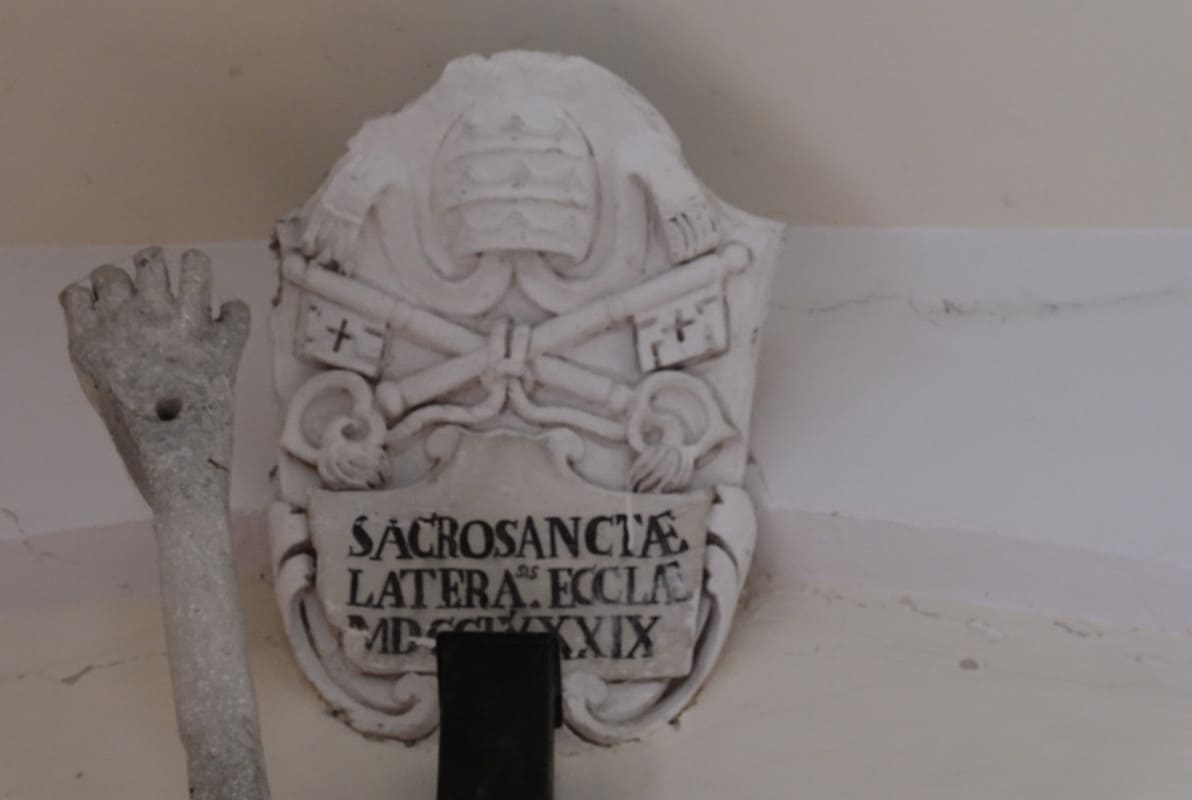
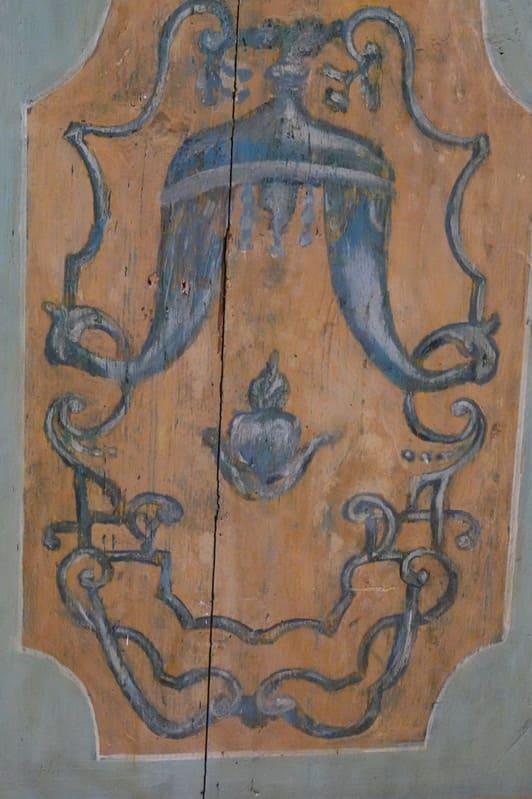

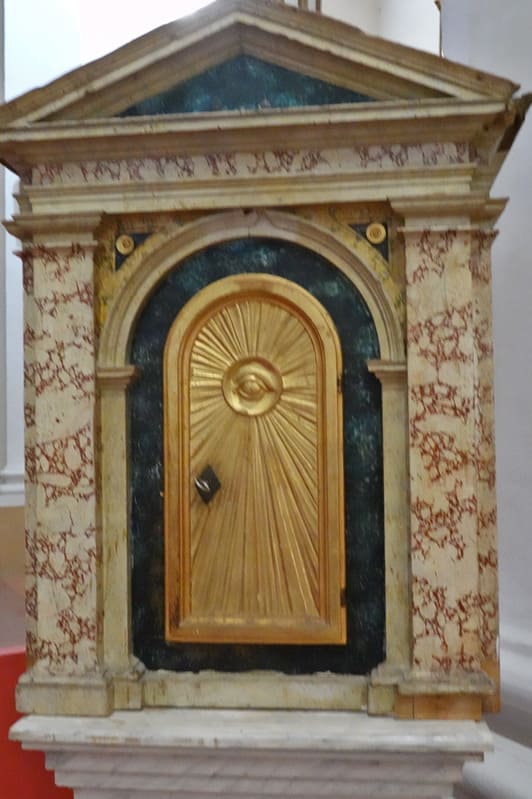
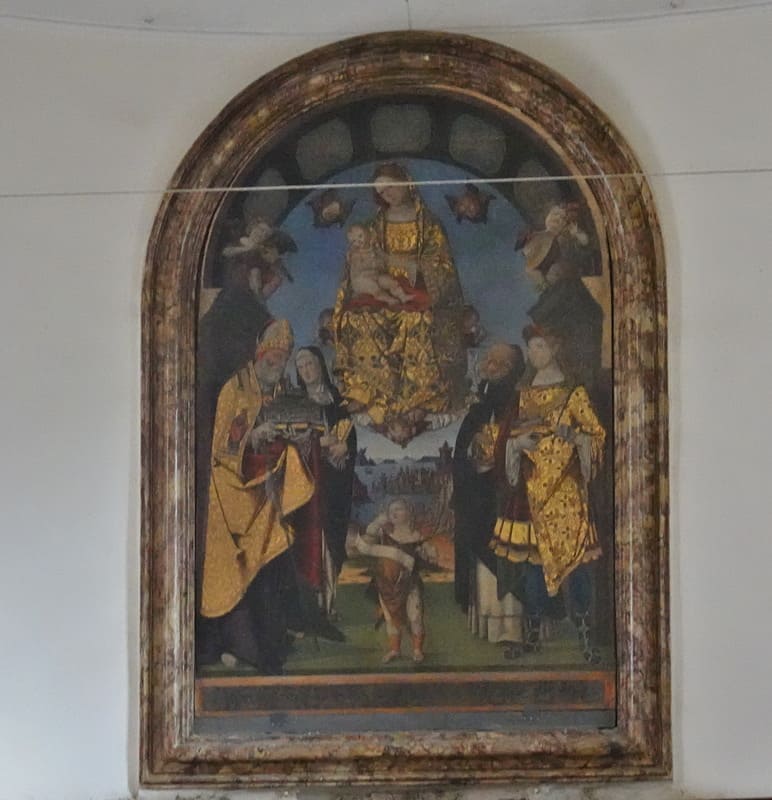
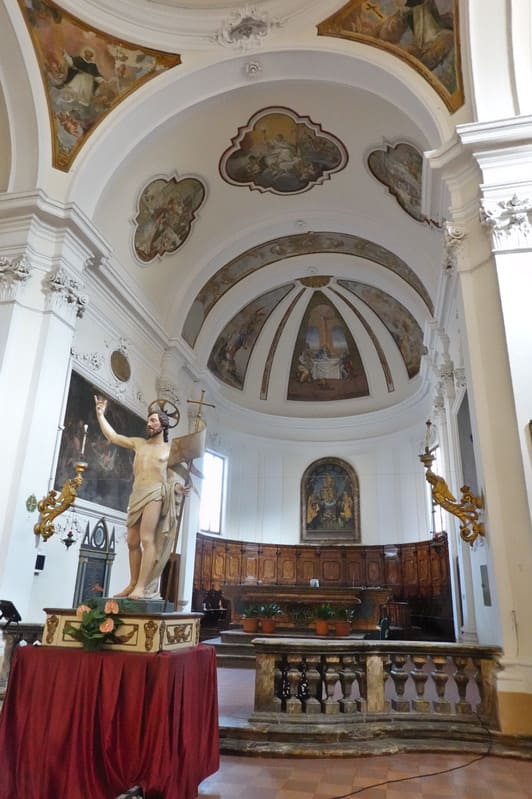
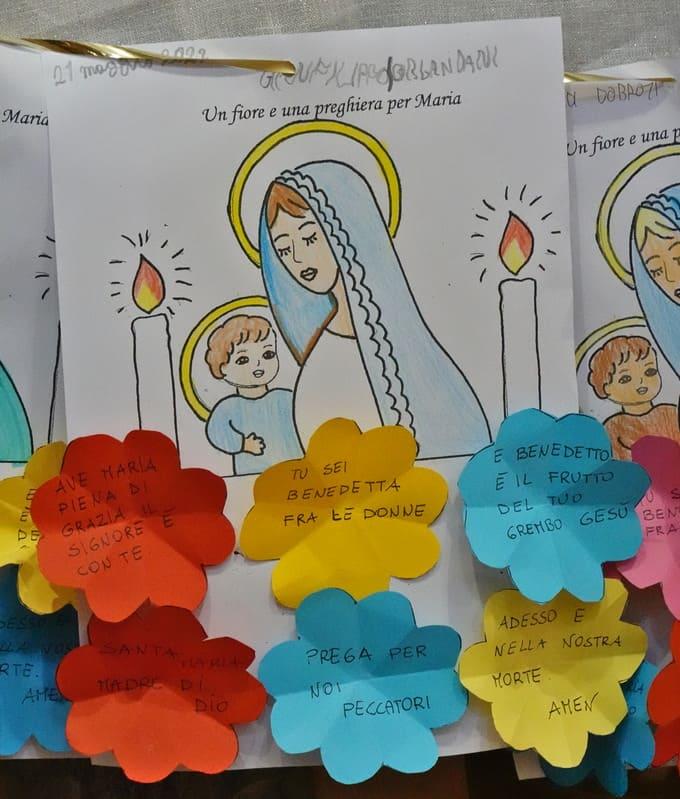

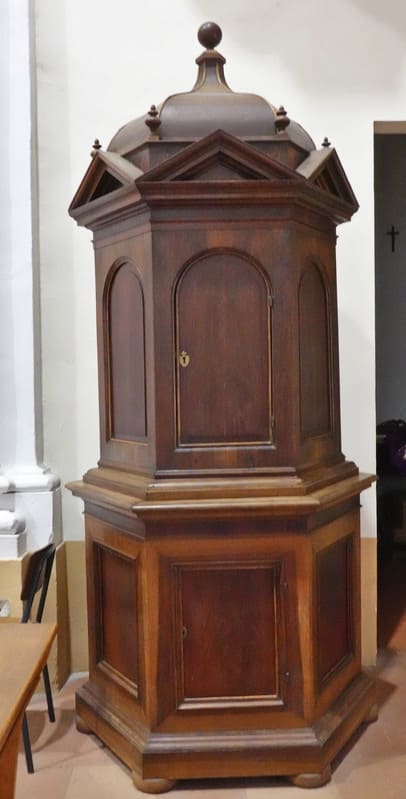

We crossed Viale Bigioli and arrived at the beautiful square of San Severino Marche, a huge piazza, 224 meters long and 55 meters wide. Once the market square in the 13th century, it evolved into the place to be for the nobility, because every respectable family built a palazzo there! The surrounding buildings date from the 16th century to the 20th century! Now it is called the Piazza del Popolo.
Churches are also there: the San Giuseppe church, closed after a heavy fire in 2009, shows its interior on the basis of a painted canvas on the outside.

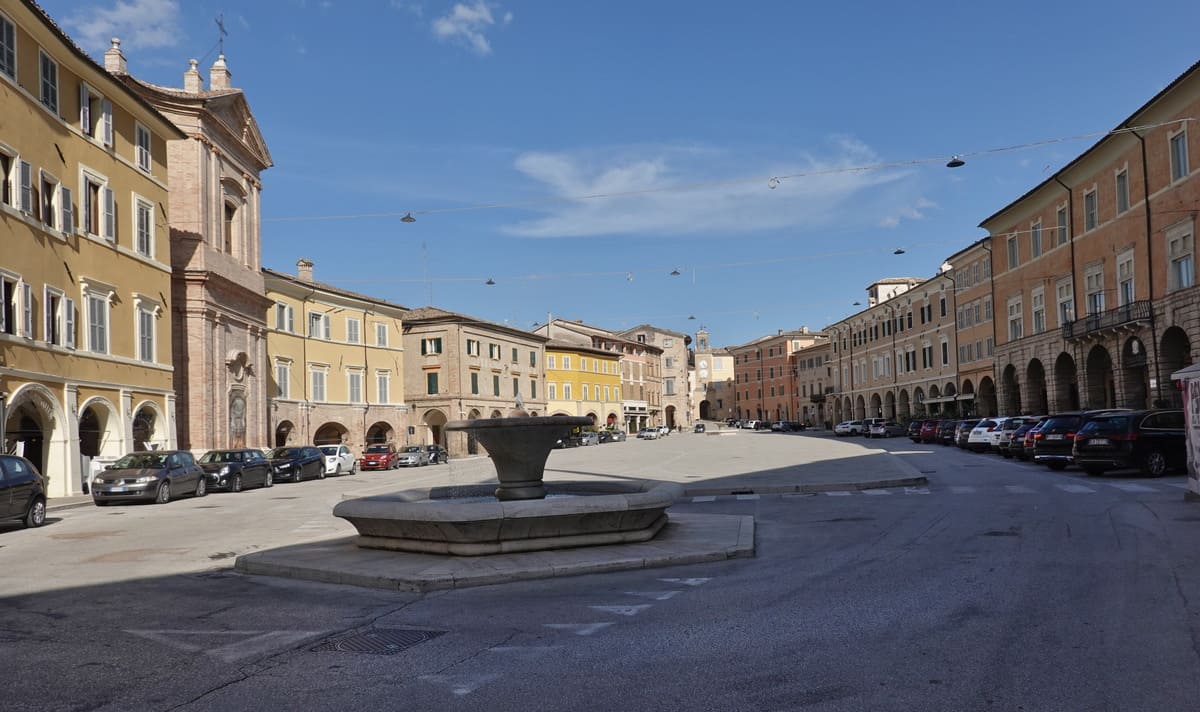
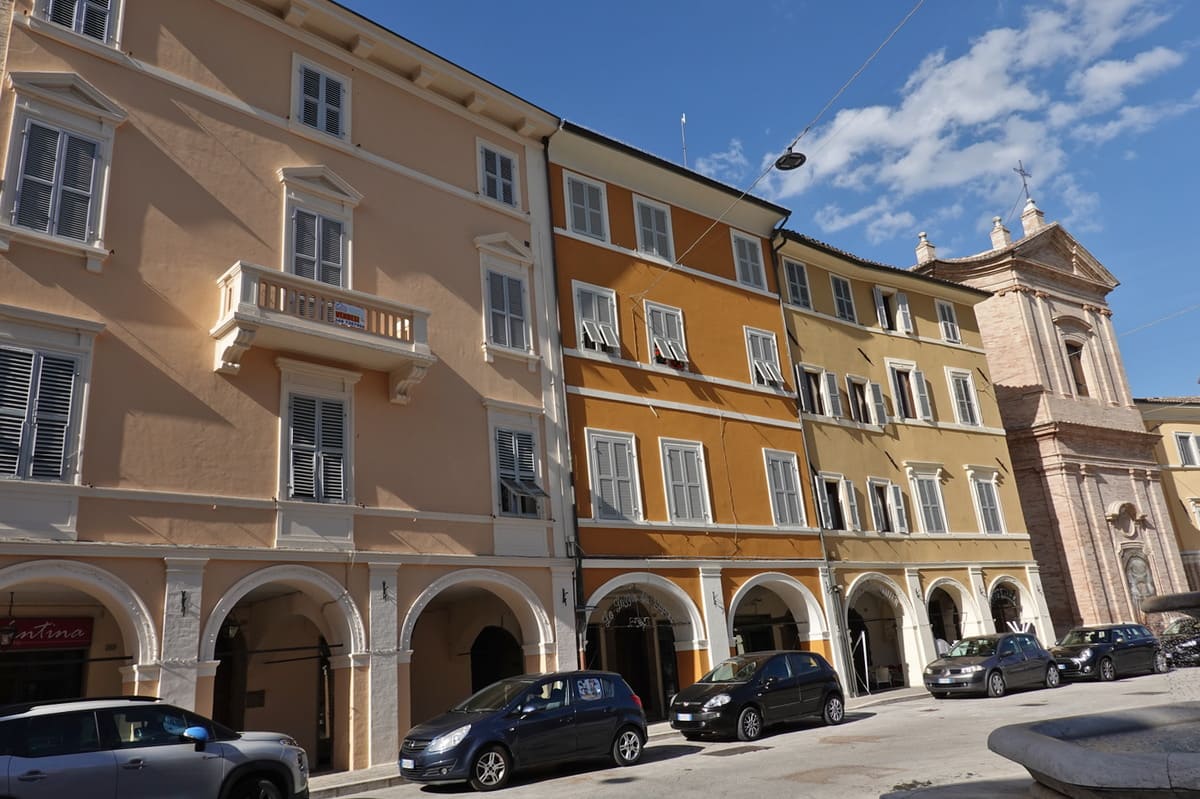

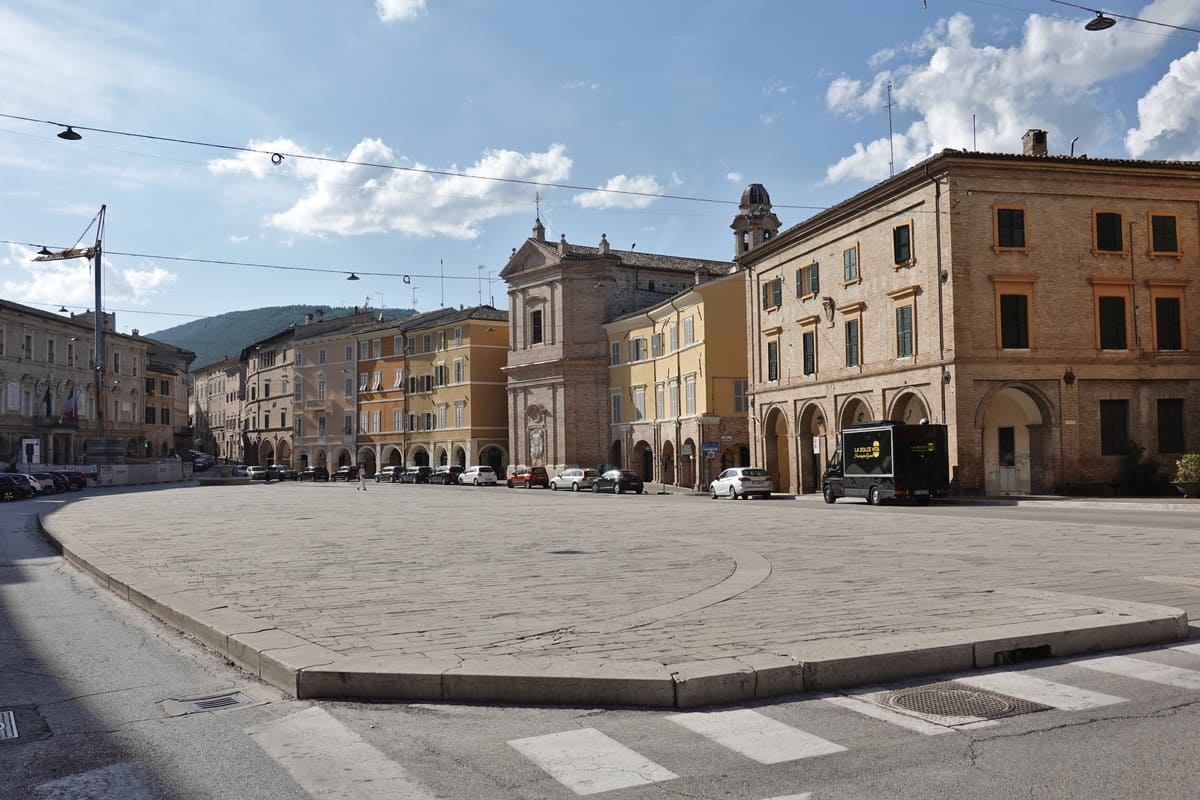
The Community House
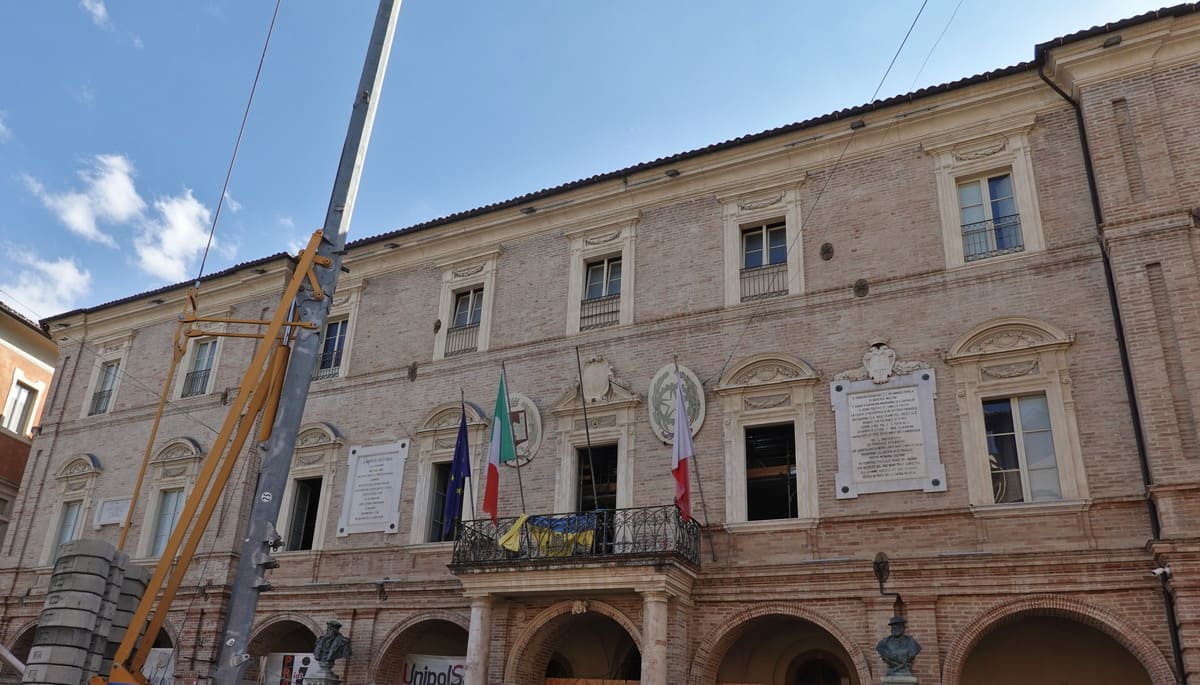

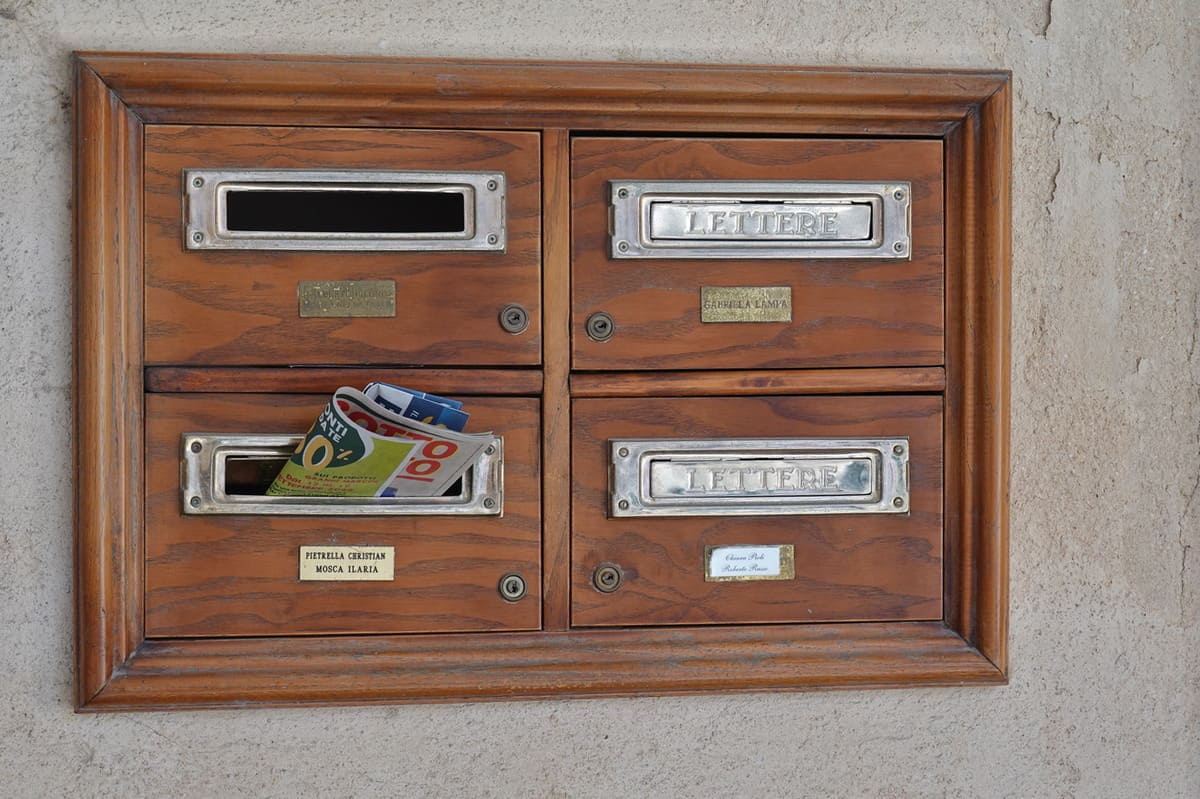
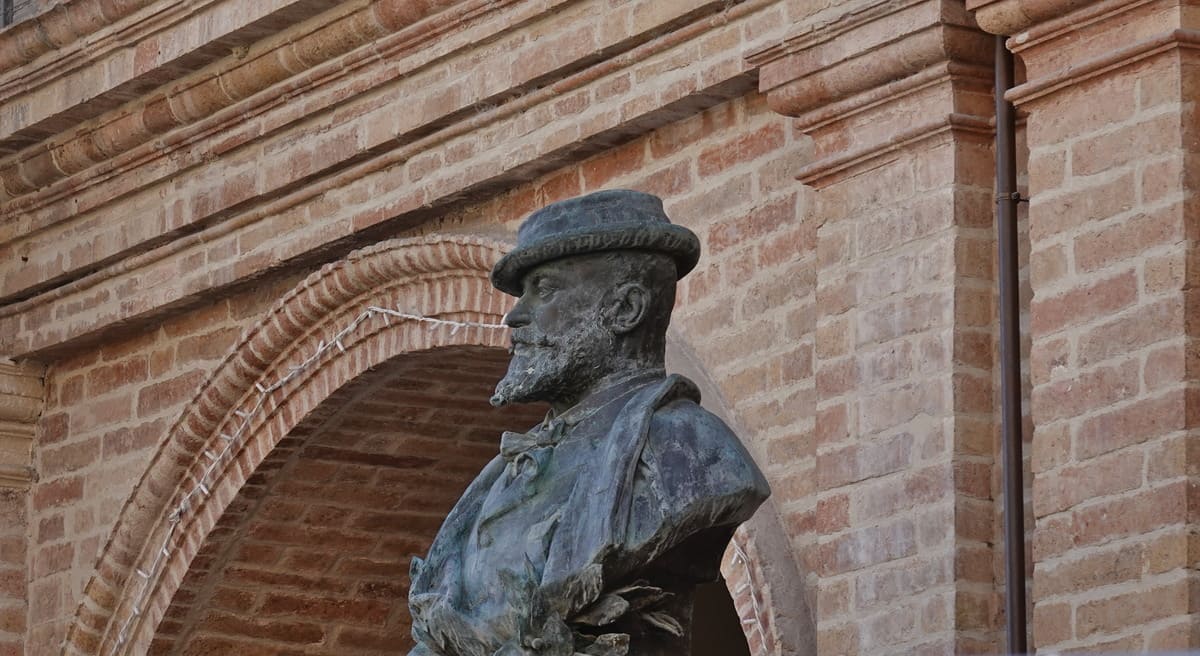
Worth mentioning is also the 19th century theater Feronia, named after the Roman fertility goddess Feronia and built by the architect Ireneo Aleandri (1795-1885) also from San Severino Marche. The latter was also involved in the Sferisterio in Macerata, among other things.
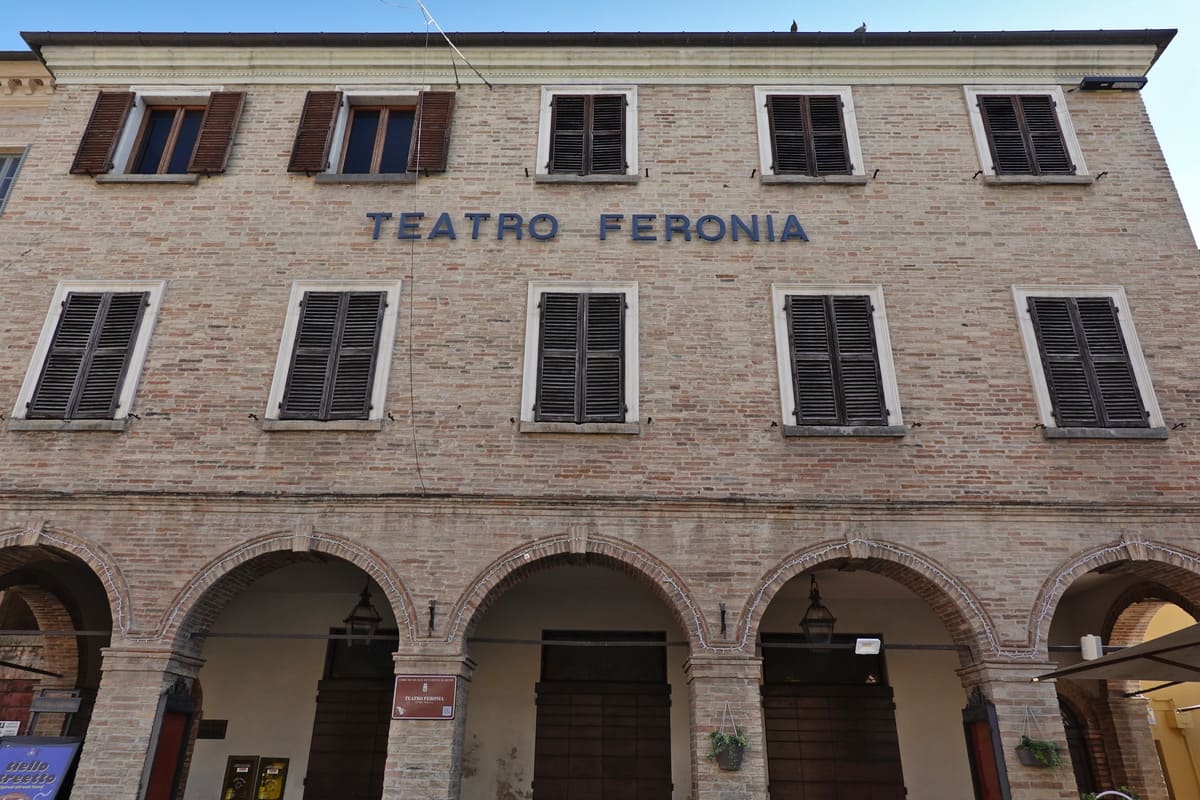

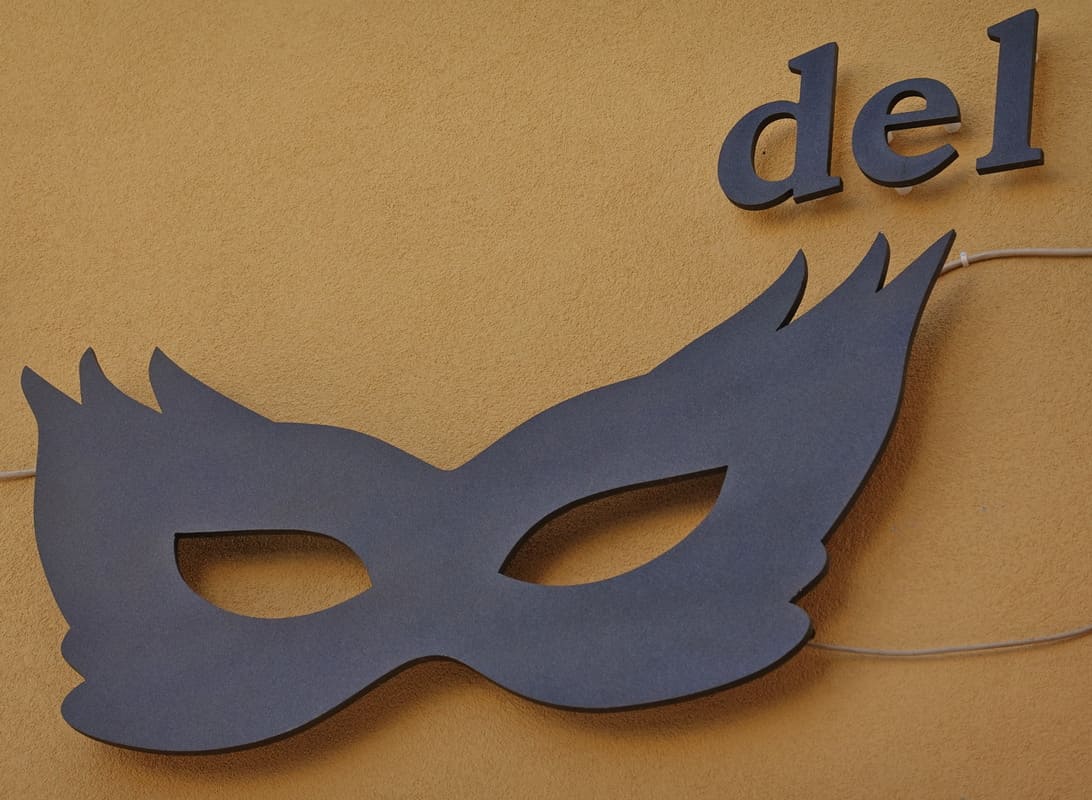
Just like the watchtower that gives access to the Chiesa della Misericordia (Mercy), we saw two timepieces, one with our time indication and one with an undivided into 6 hours… in 1832 the country of Italy did not yet exist, so that different time calculations still existed: what we still use today dated from Napoleon’s time, the other was still before Napoleone. The 15th century mechanism of the clockwork, one of the oldest in Le Marche, was obtained from an older tower.
To the left of it we saw the Fonte della Misericordia. Right, side by side the 16th century government palazzo (dei governatori) and the episcopal palace (vescovile)
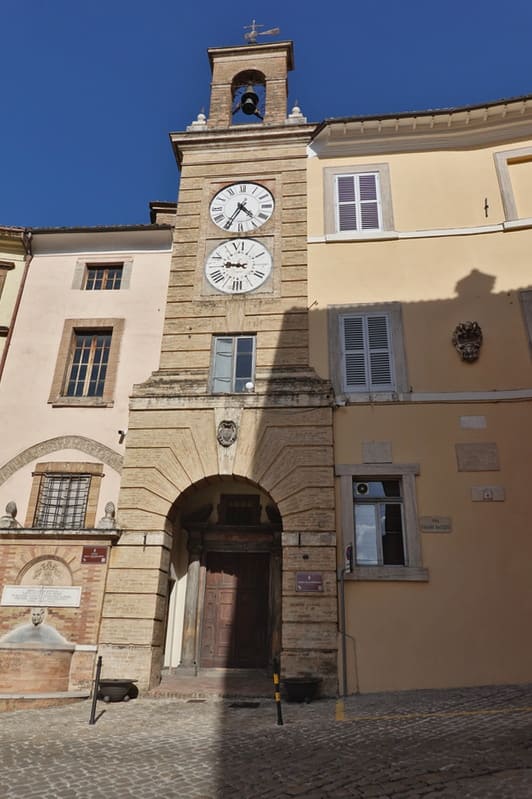
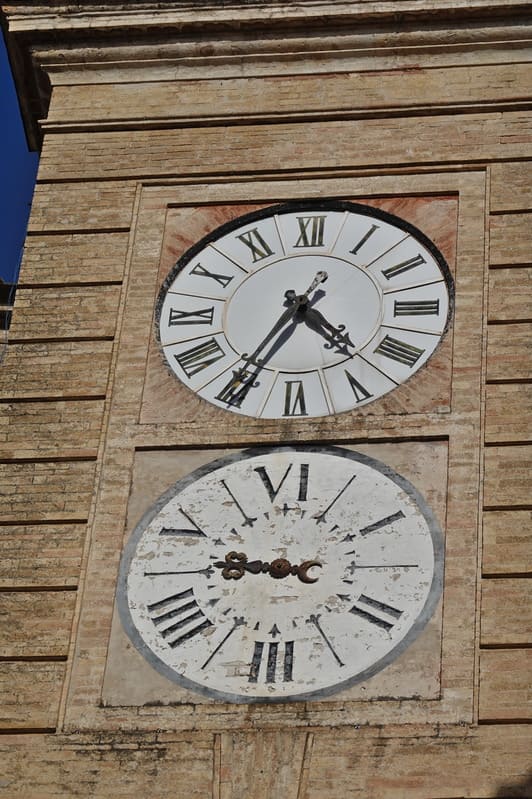

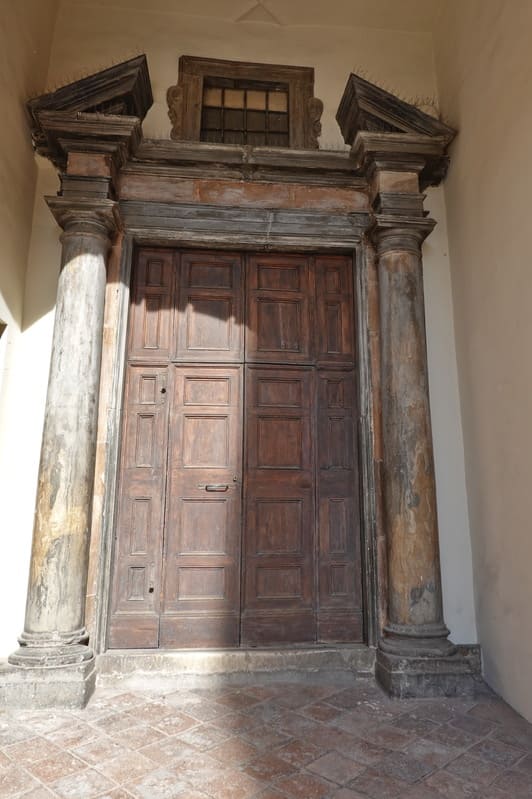

After the tour along the Piazza del Popolo, we took the Via Garibaldi road past the town hall to arrive at the Monte del Pietà, the restored oratory Corpus Domini from the 16th century.

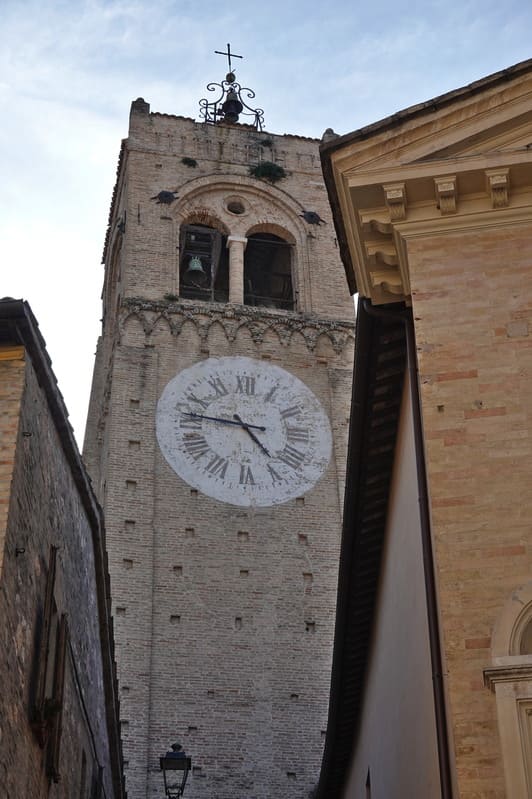

Around the corner next to the Agostino fountain is the Saint Agostino church that became a cathedral in the 19th century.
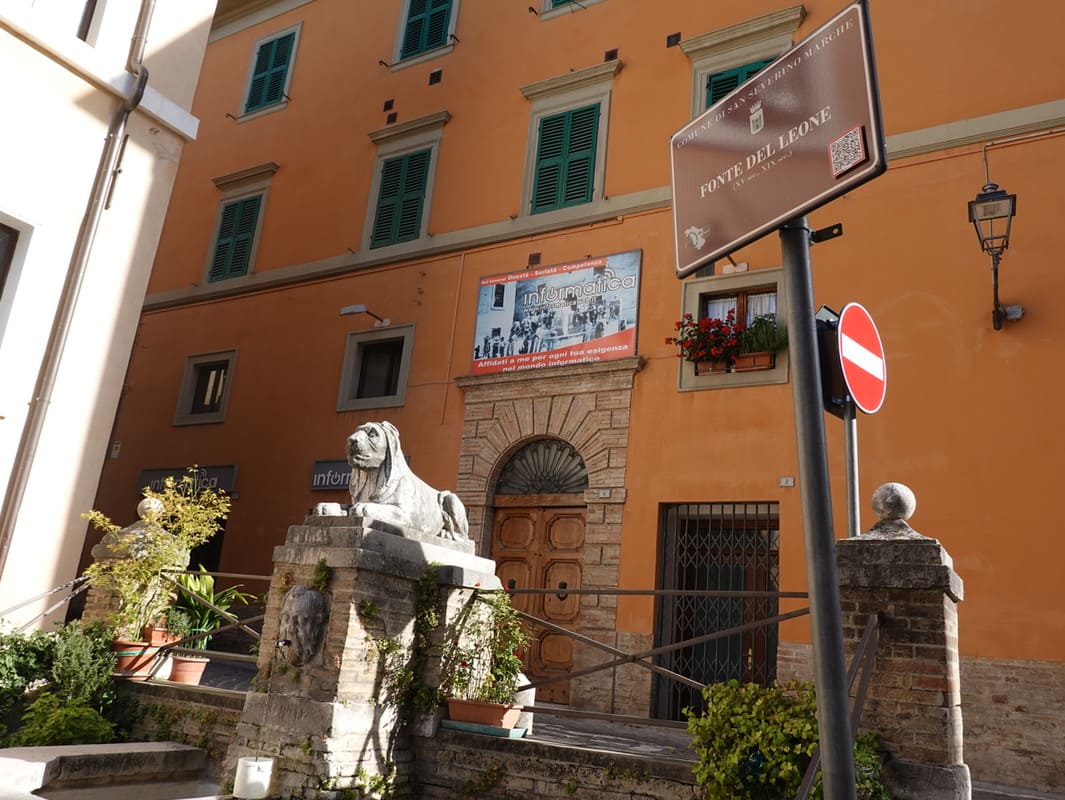


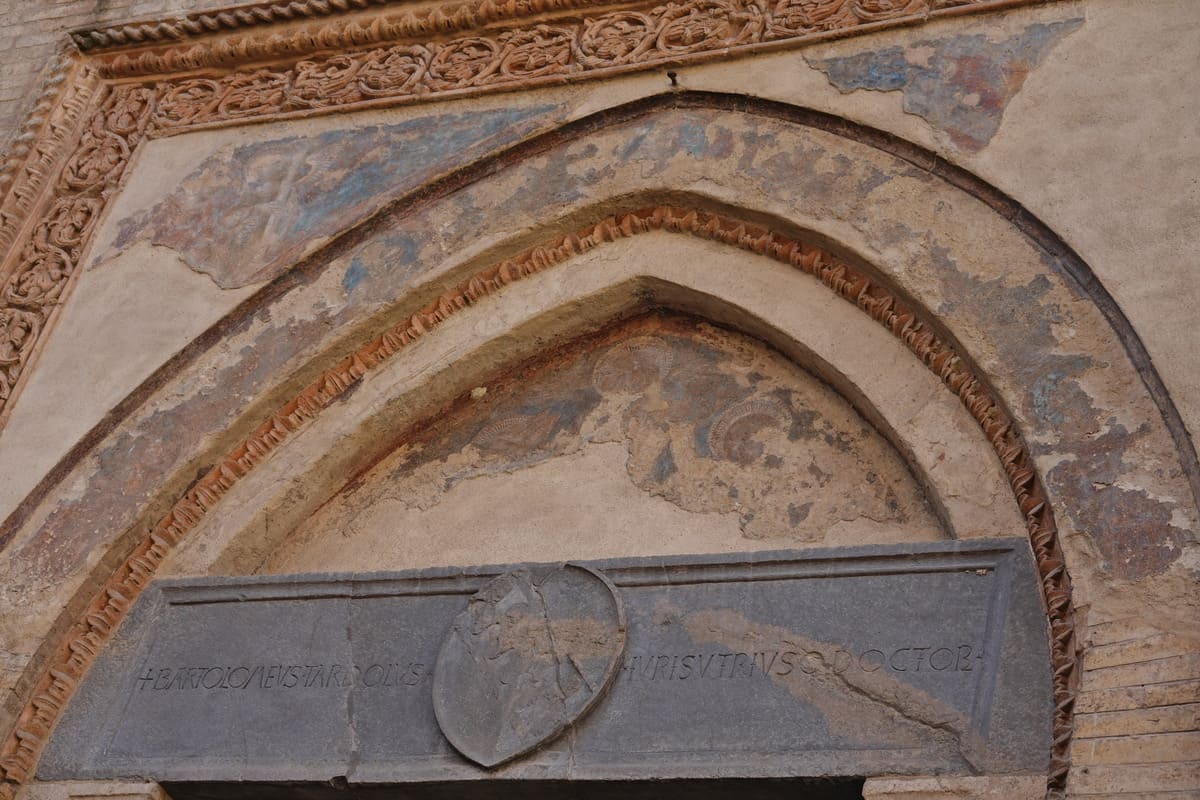
We turned right into Via Salimbeni, where the pinacoteca is also located. We saved it for another time and meandered further along alleys…
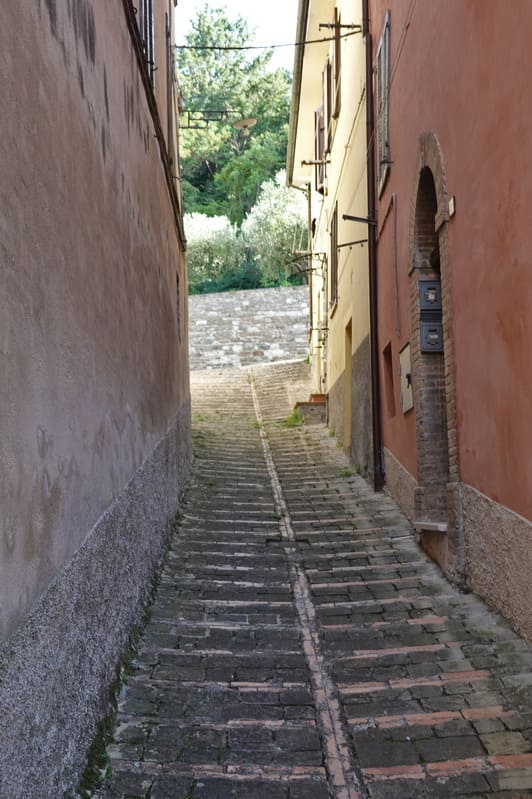
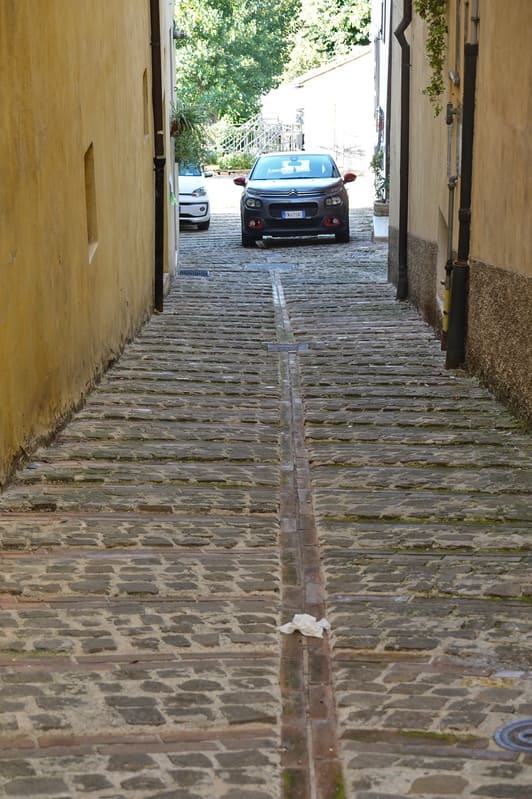
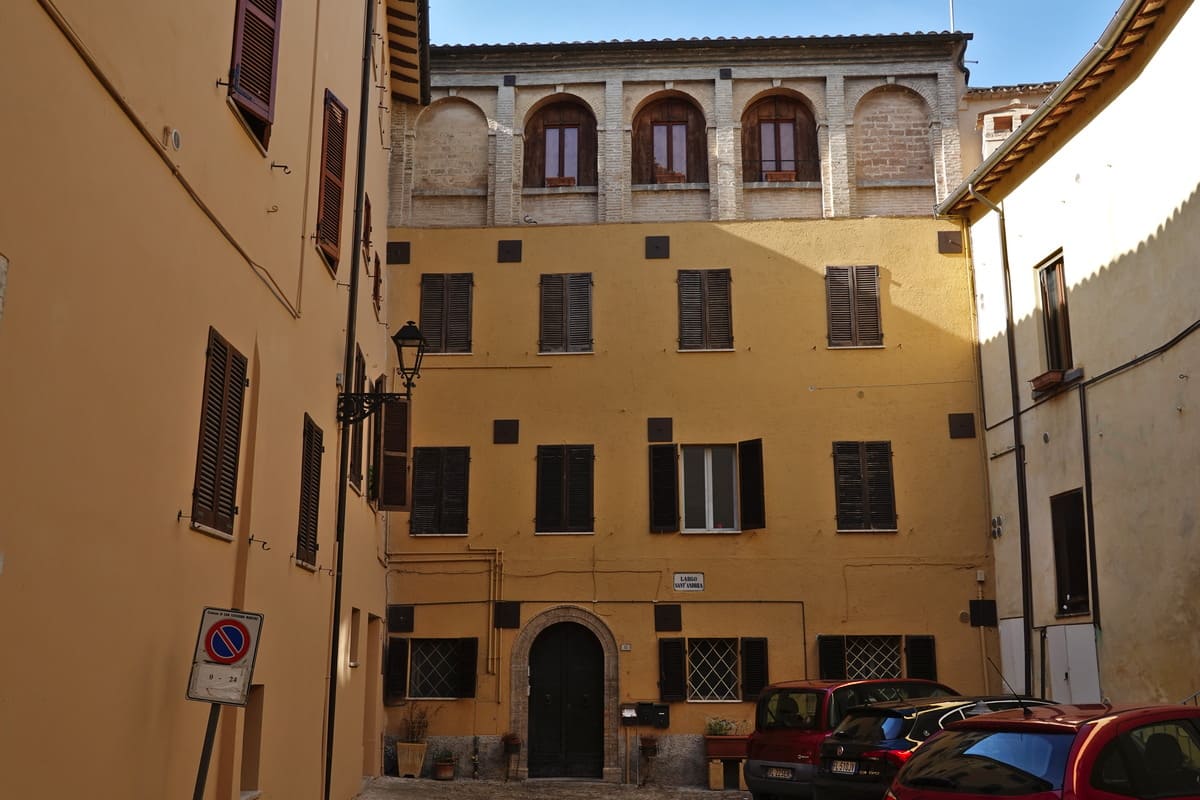
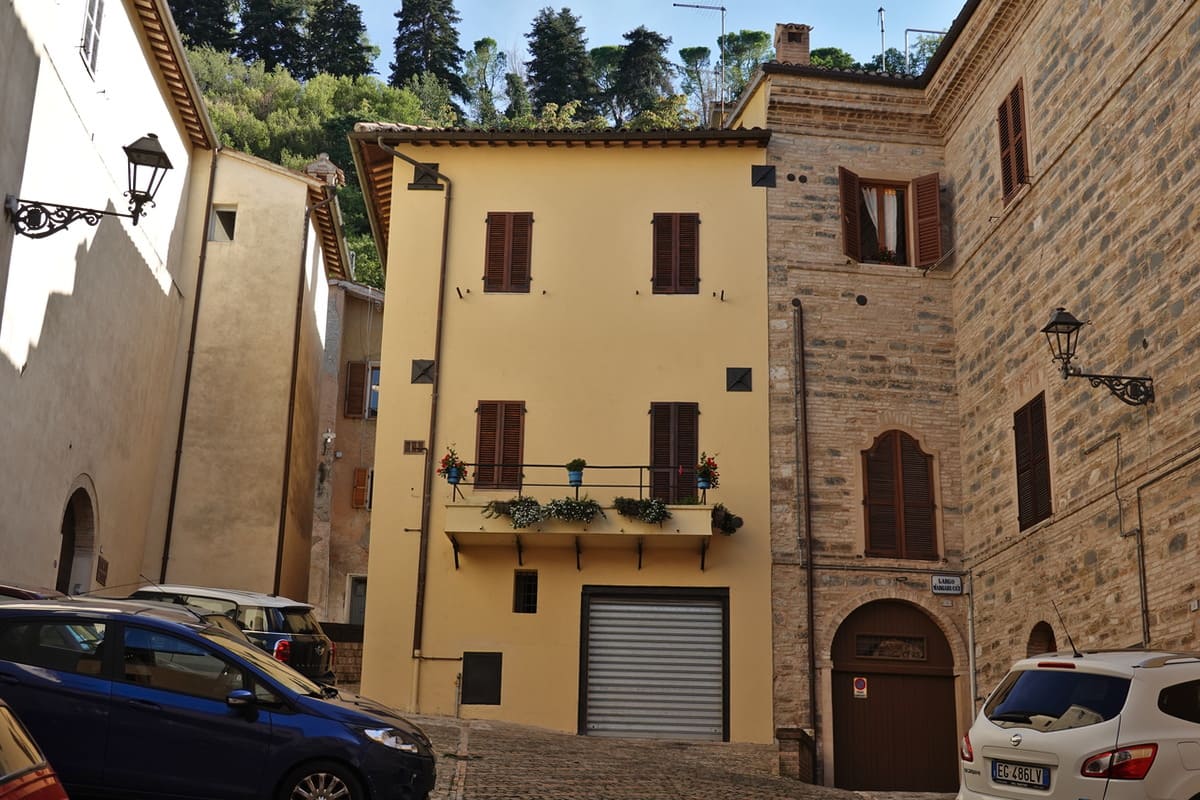
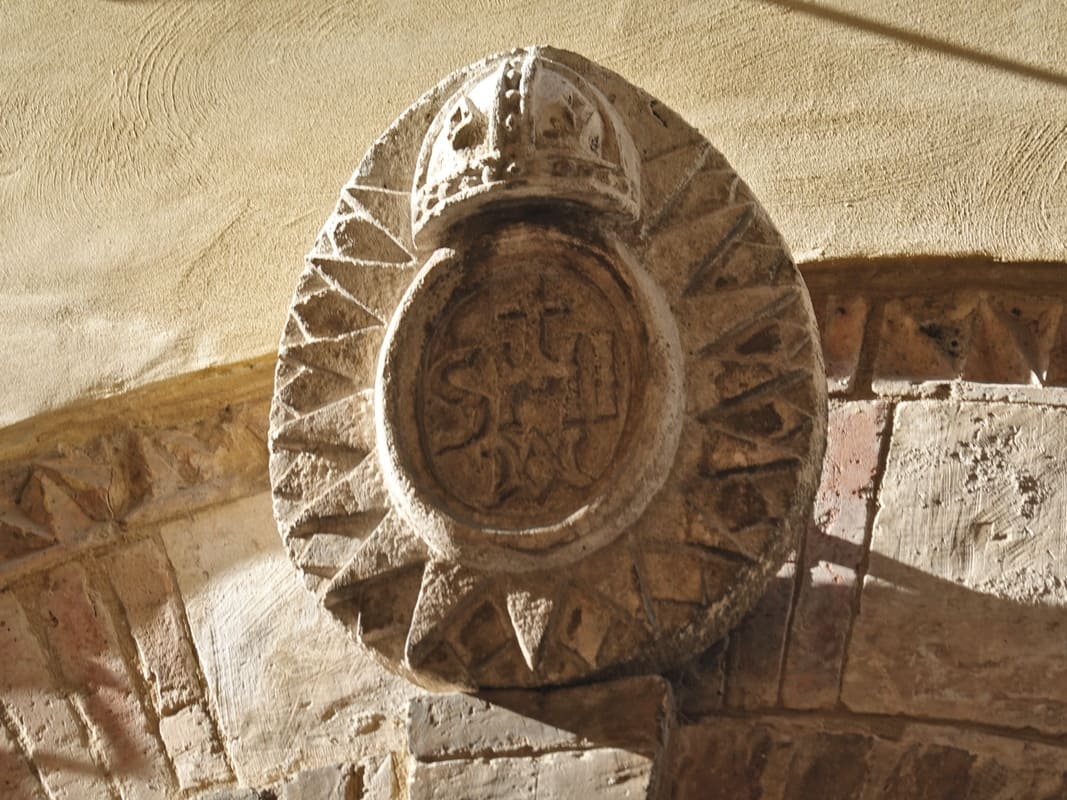

…until we reached the courtyard of the 12th century San Lorenzo basilica in Doliolo (from the Roman word dolium which refers to the large earthenware pot from which monks distributed wine to the people on holidays). Here we still walked on the original street coverings from the past. However, the entrance was at the back.
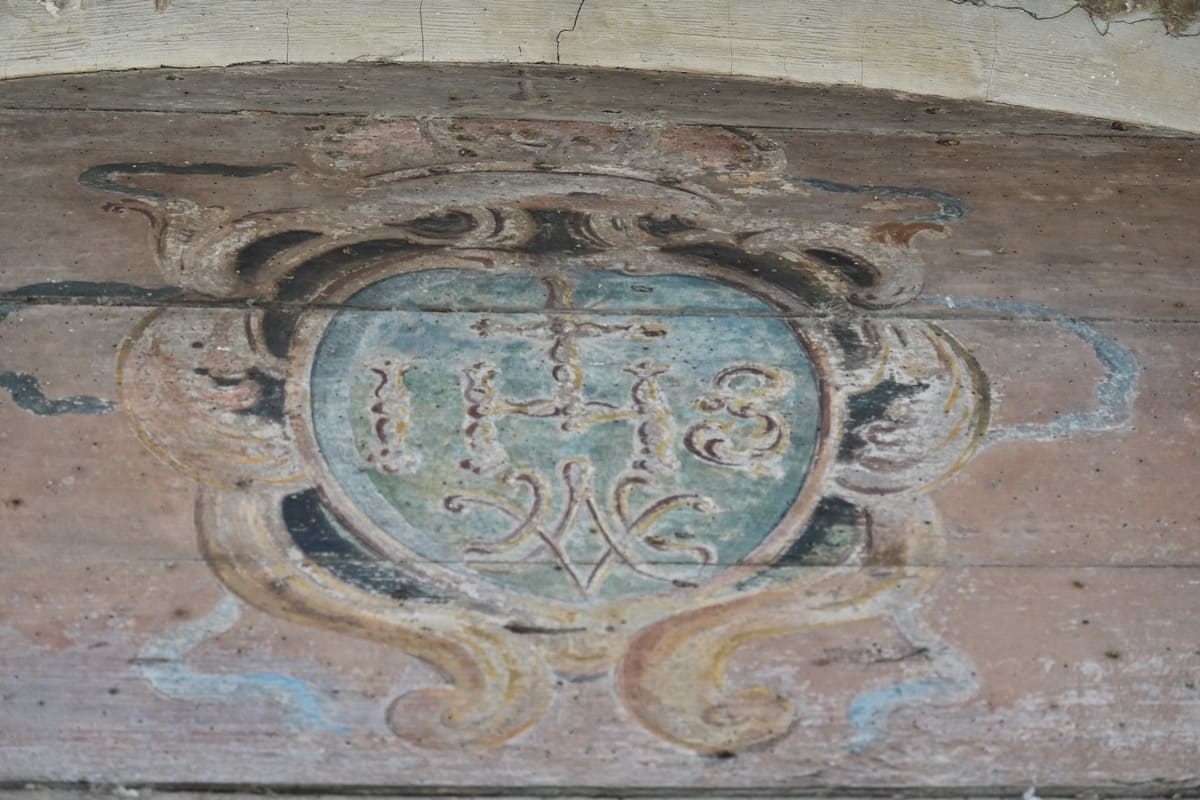

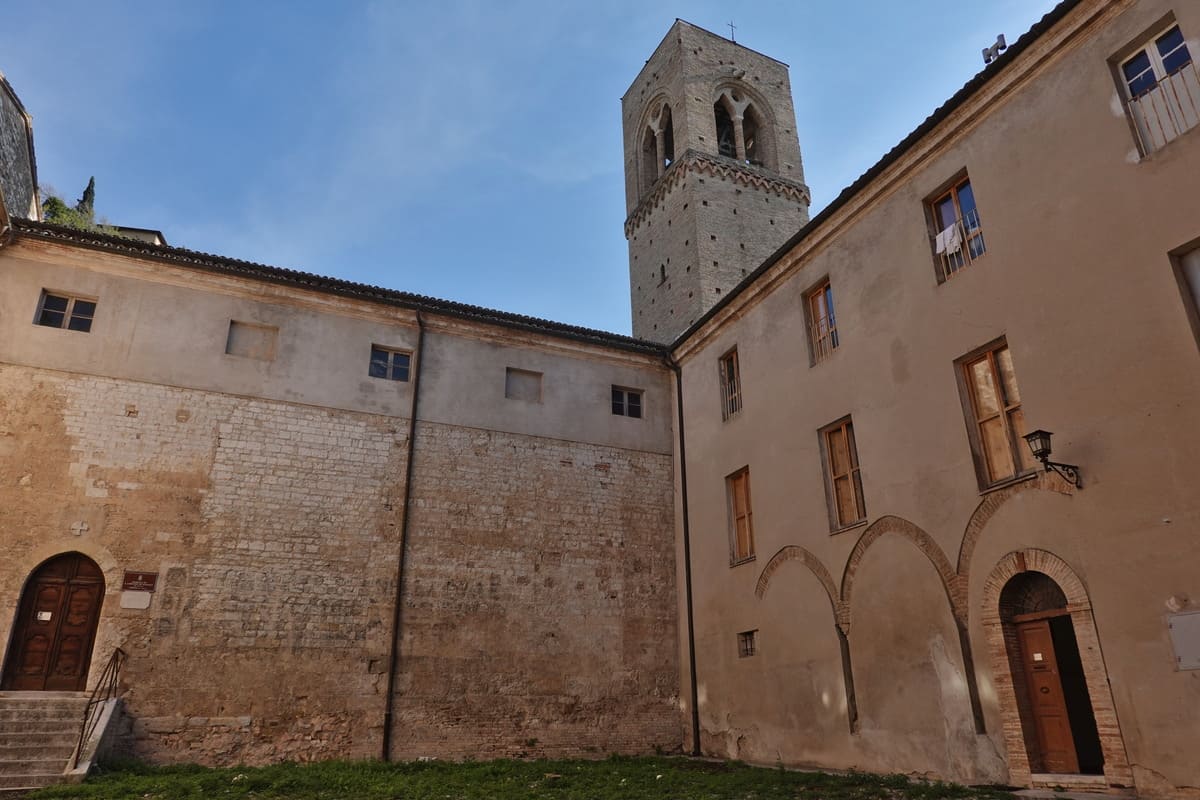
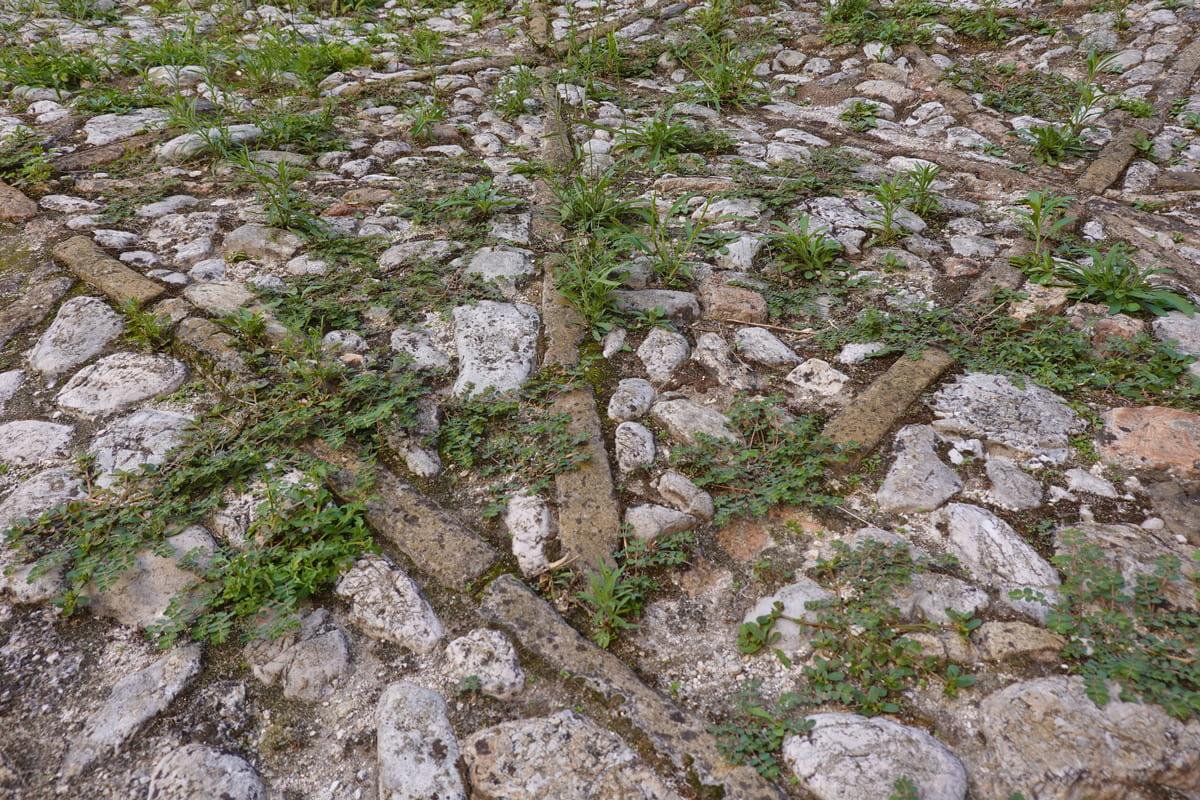
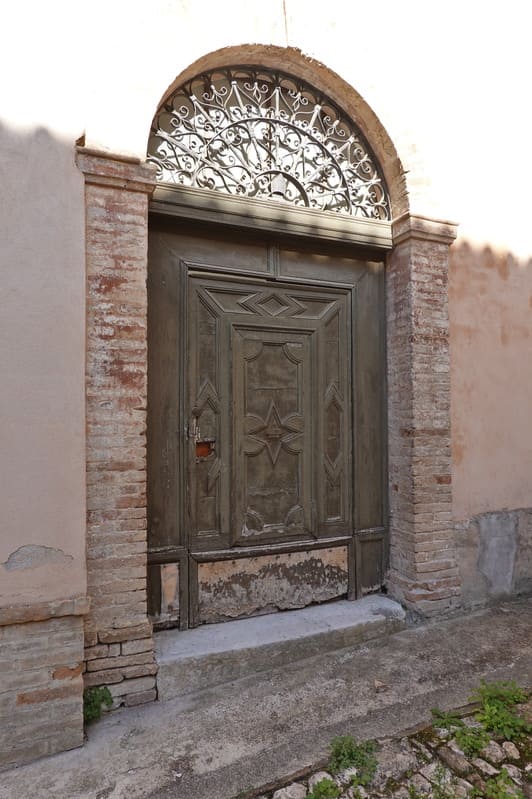
For this we arrived at the Porta San Lorenzo to leave the part within the city walls for a while and catch a glimpse through a hole of the San Paolo church al Ponte. Too bad it was closed, because the architect Aleandri would have incorporated a 13th century church here.

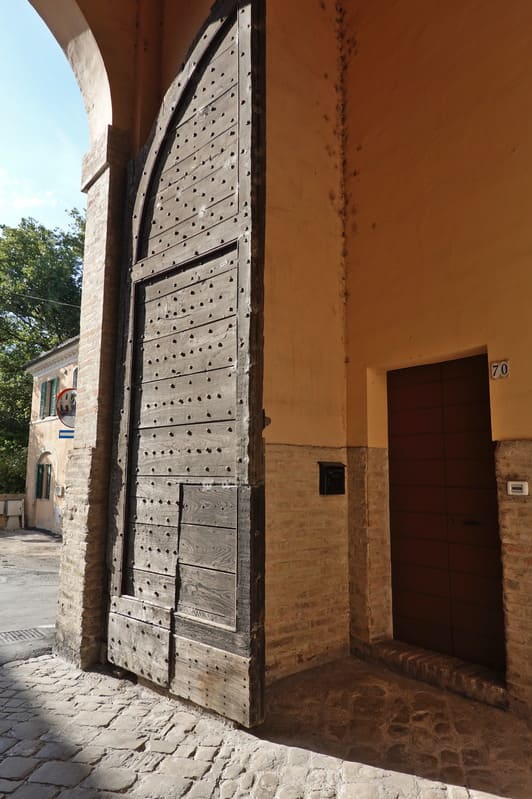
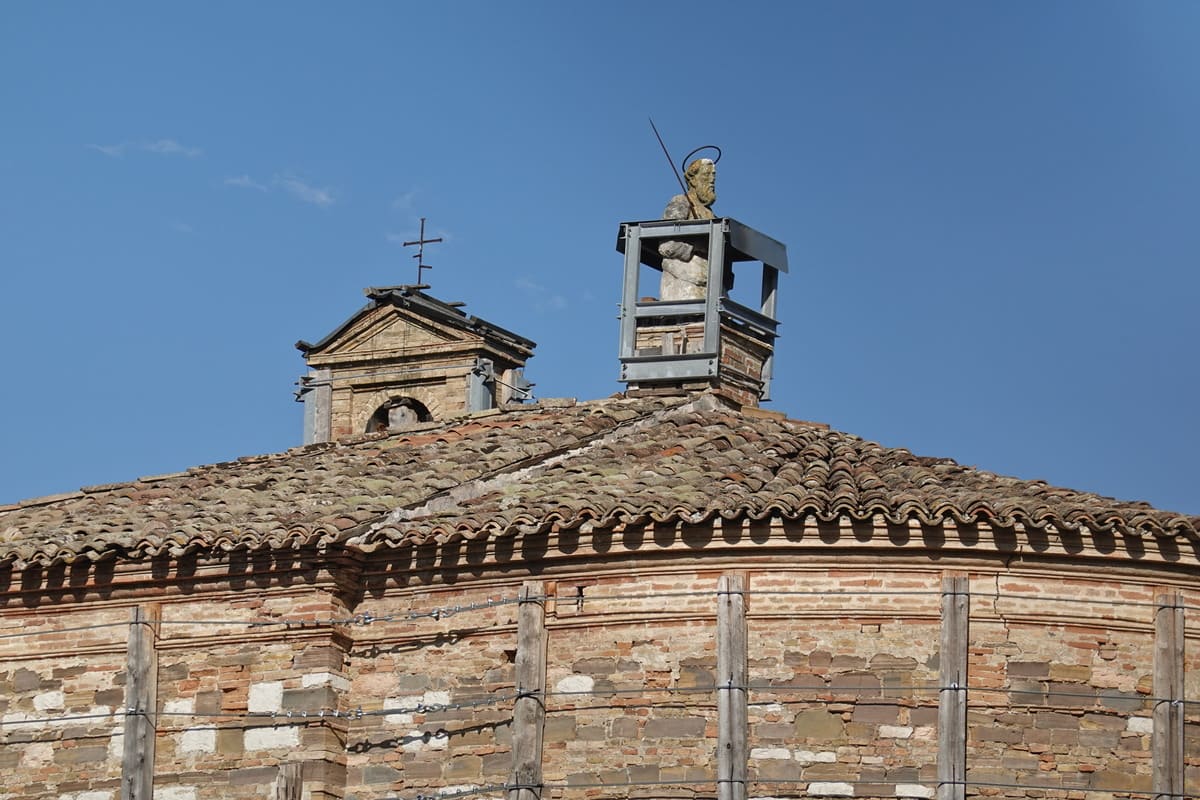
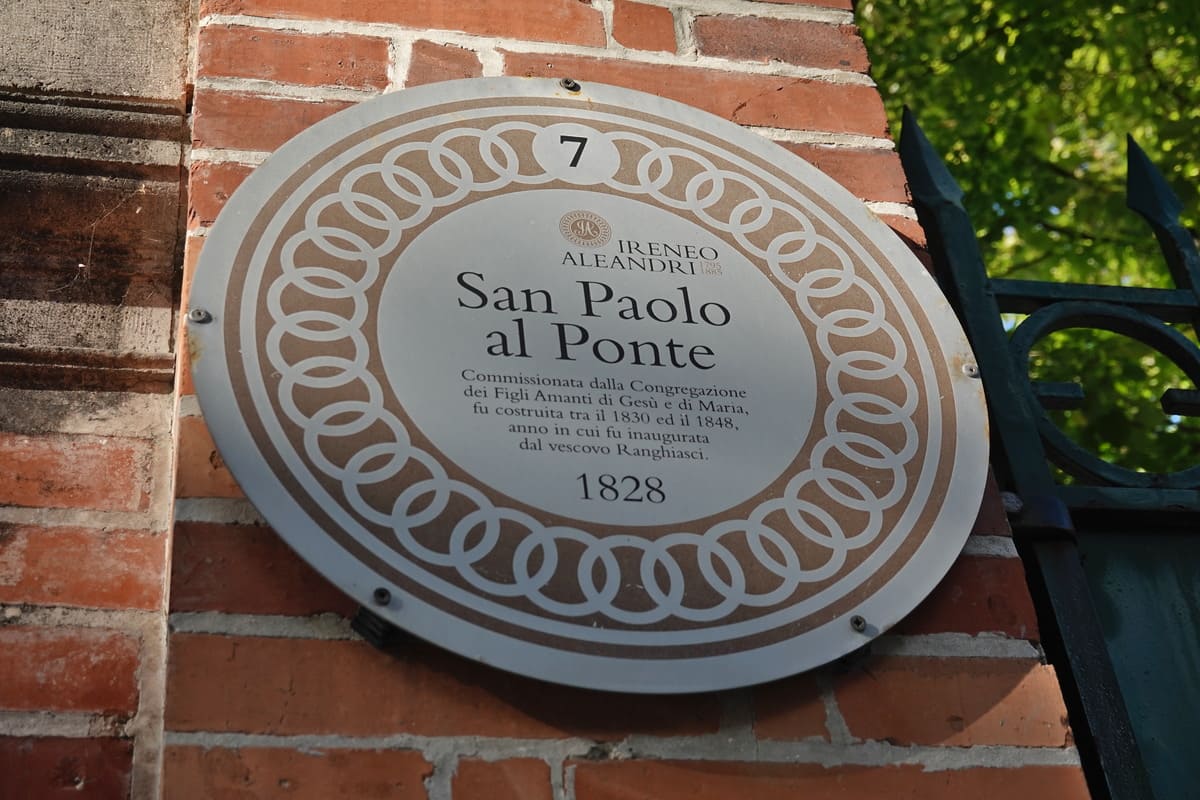

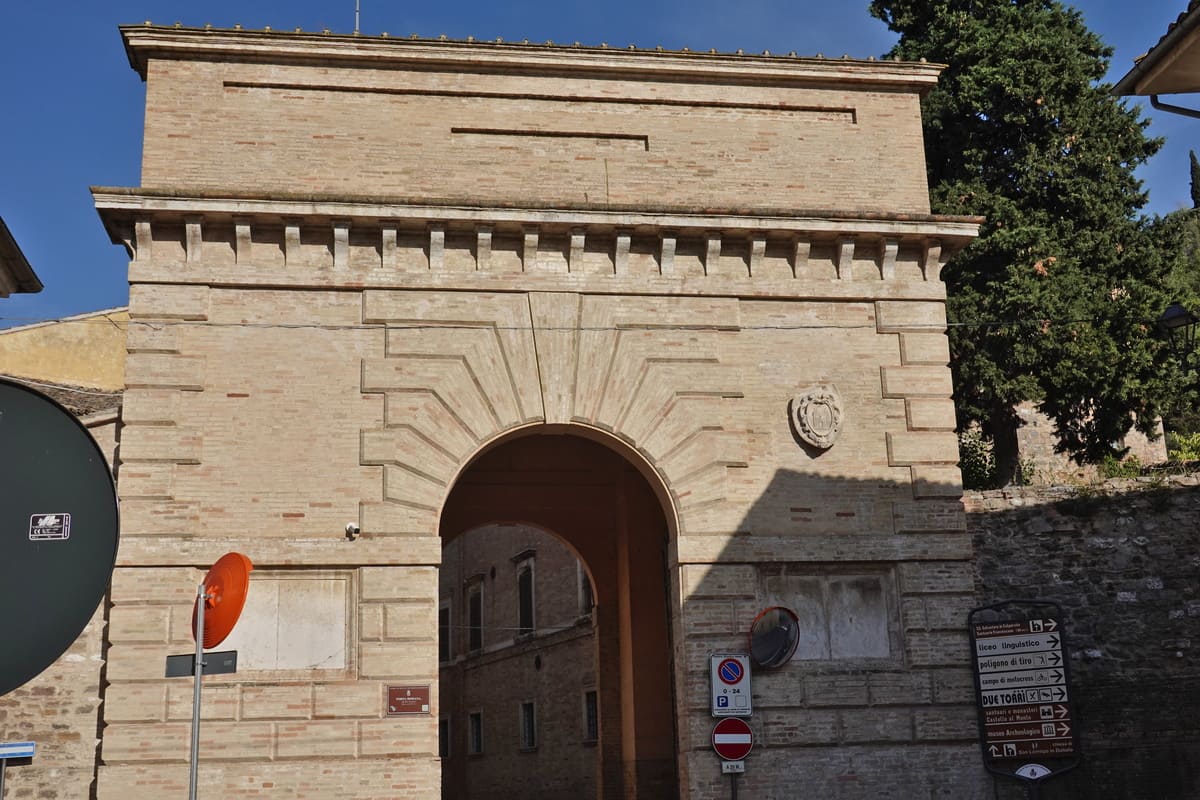
Back to the city gate where we noticed the sign of the Cappuccini’s Cammino (walk). Now we really reached a part of the city we had never been to, despite the previous visits.
We turned left to enter the basilica. Fortunately it turned out to be open because we entered a real gem. The story goes that in the 6th century AD a number of monks built a church here on the remains of the Roman Feronia temple. In the 11th and 12th centuries the Benedictines already renovated the church, so that the original part would serve as a crypt. The tower was added in the 14th century.
From the inside, the structure immediately caught us off guard; all kinds of arches and a beautiful vaulted ceiling, to reach the altar one even had to climb a few stairs.
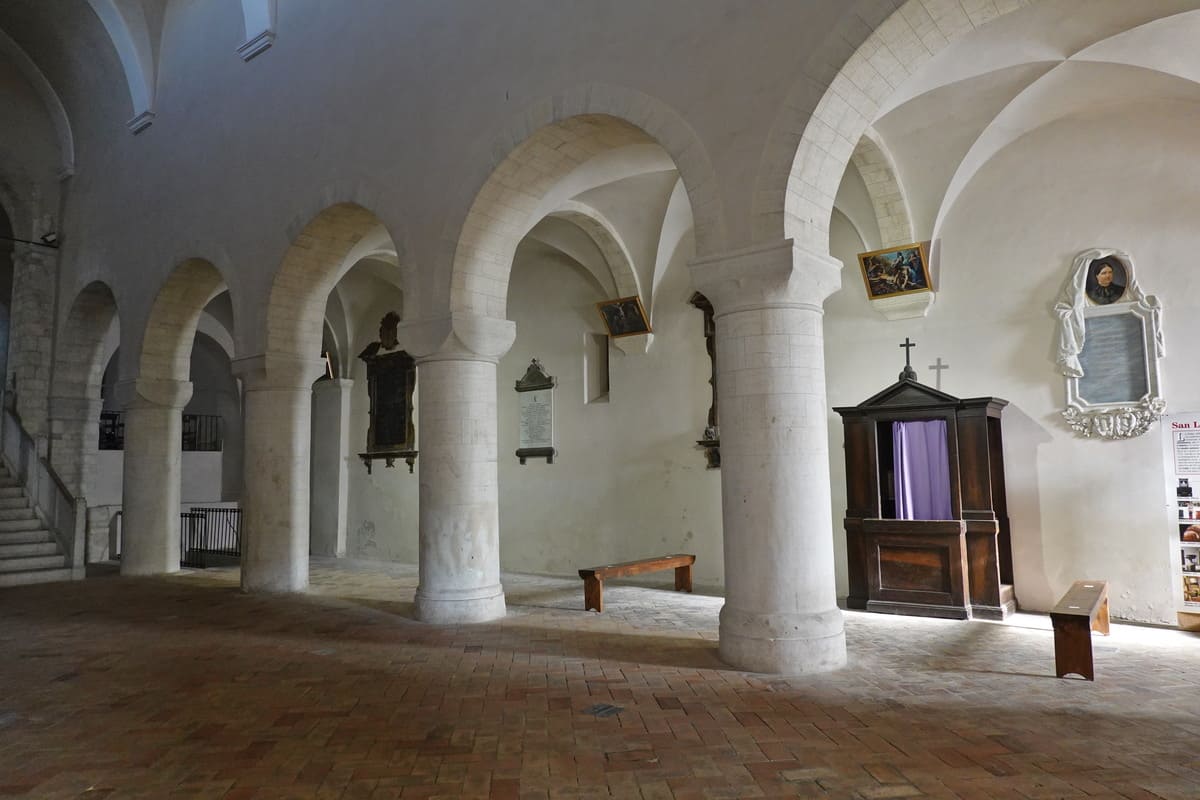
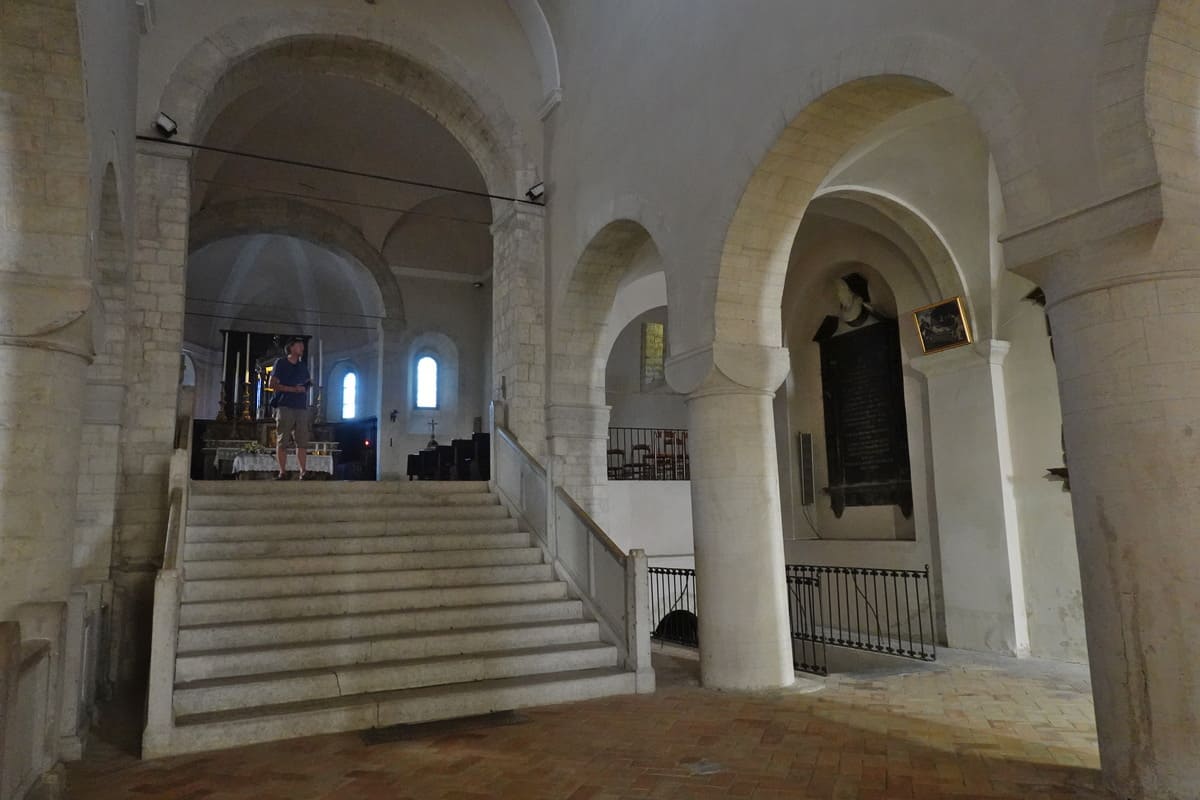

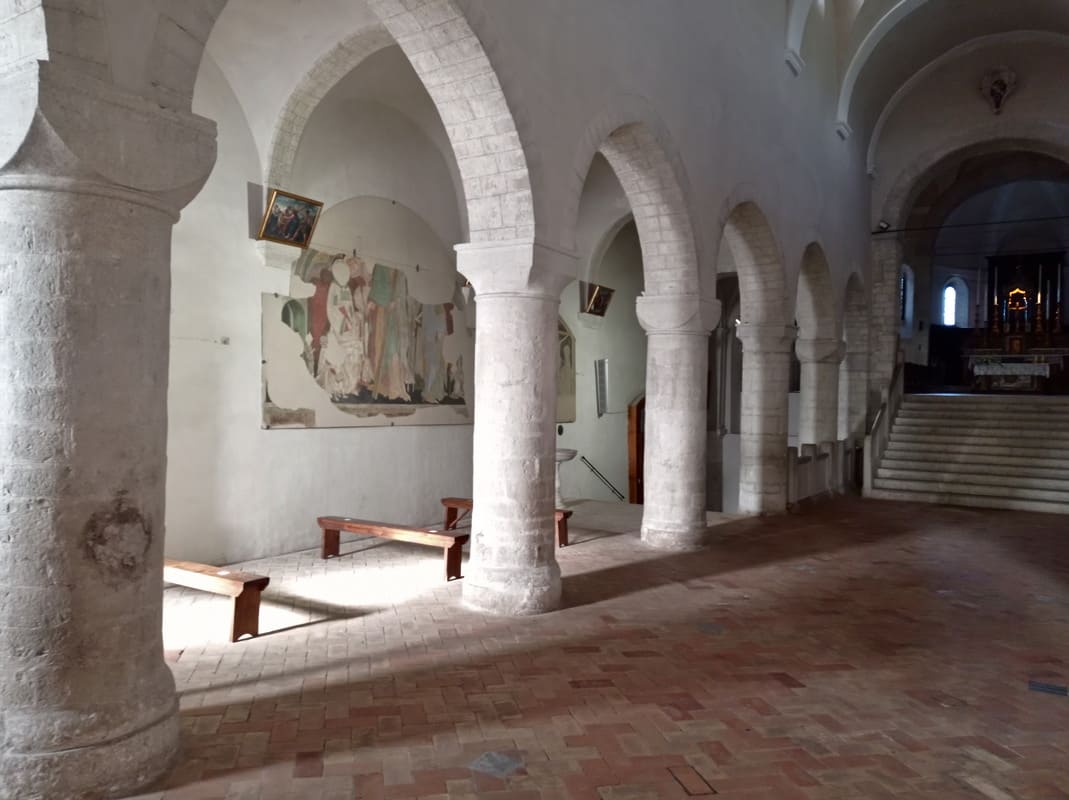
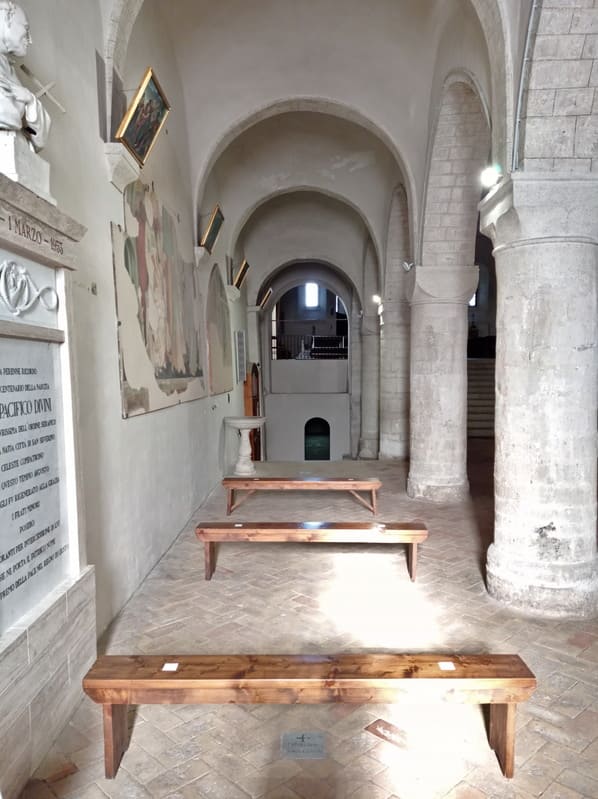

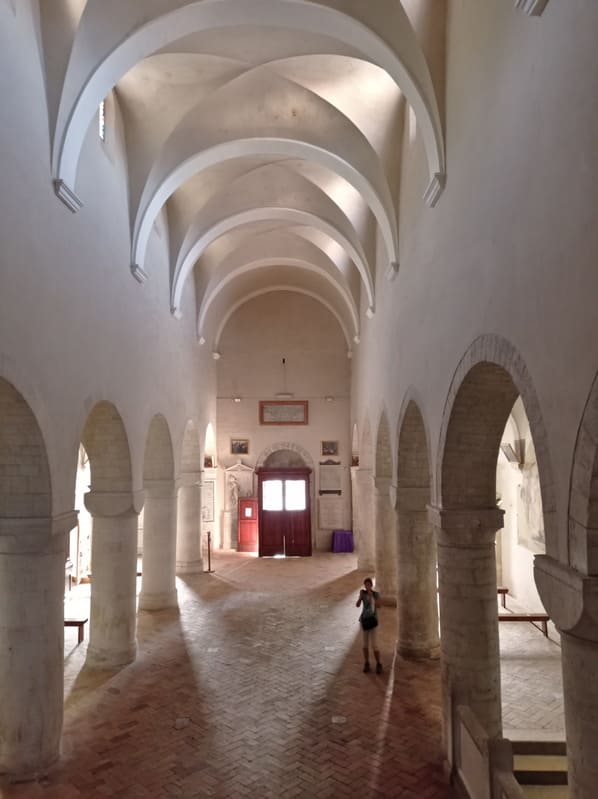
Once at the top of the stairs you could enter the sacristy on the left, once the refectory of the monks. Here is the urn of San Severino (470-545); a hermit monk together with his brother Vittorino to be named bishops respectively in Settempeda, later San Severino Marche and Camerino.
In the past, the entire space was painted by the Salimbeni brothers depicting the Crucifixion and Saint Eustachius. There was also an old holy water font.

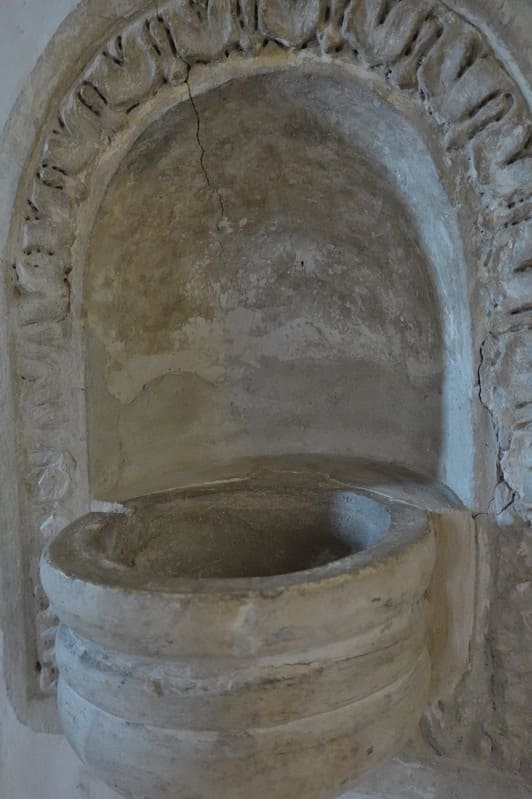
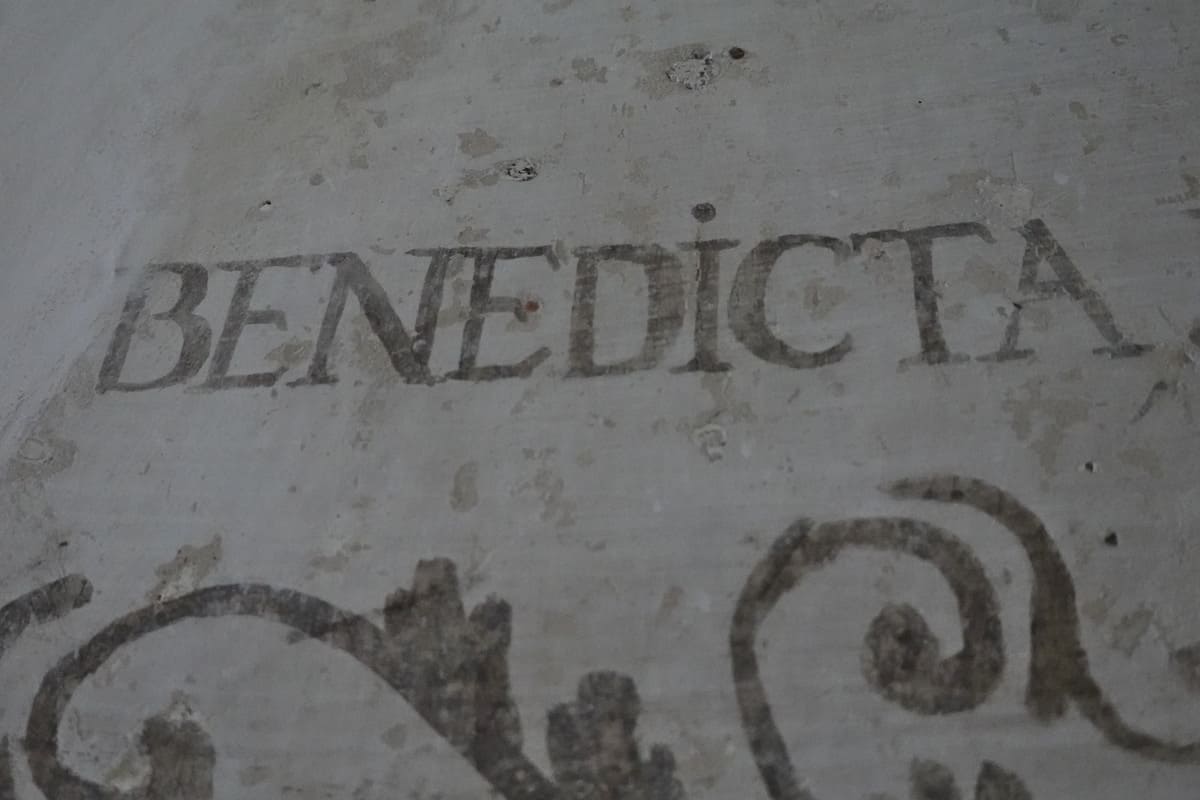


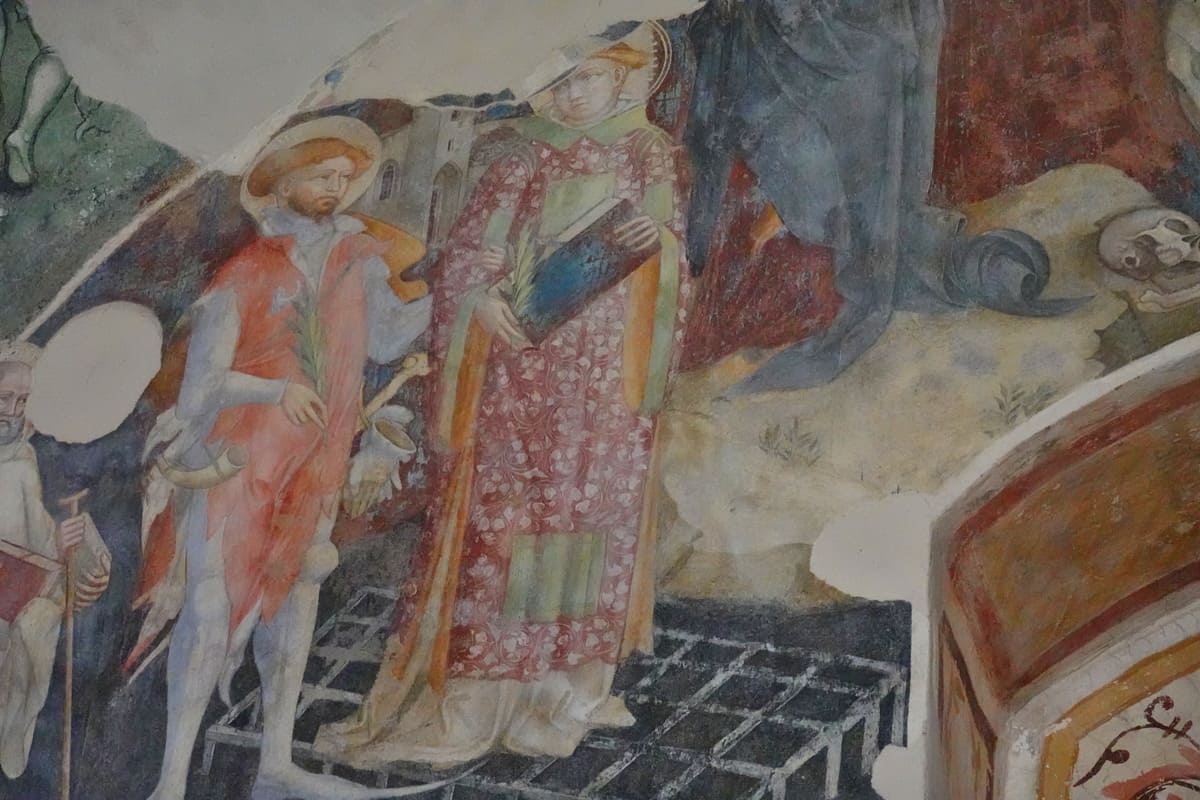
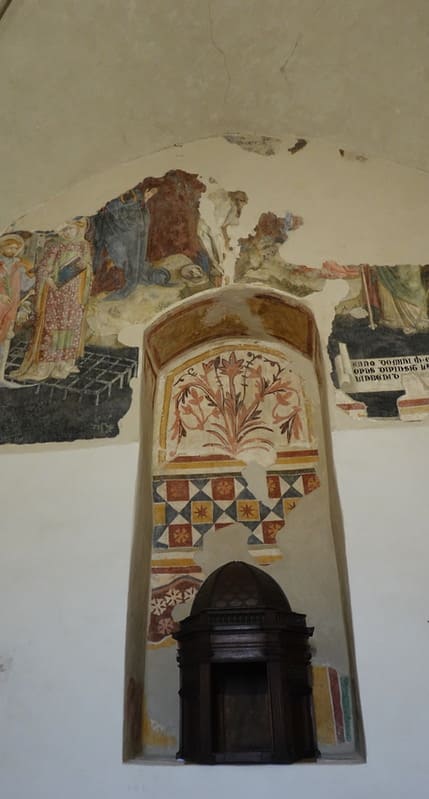
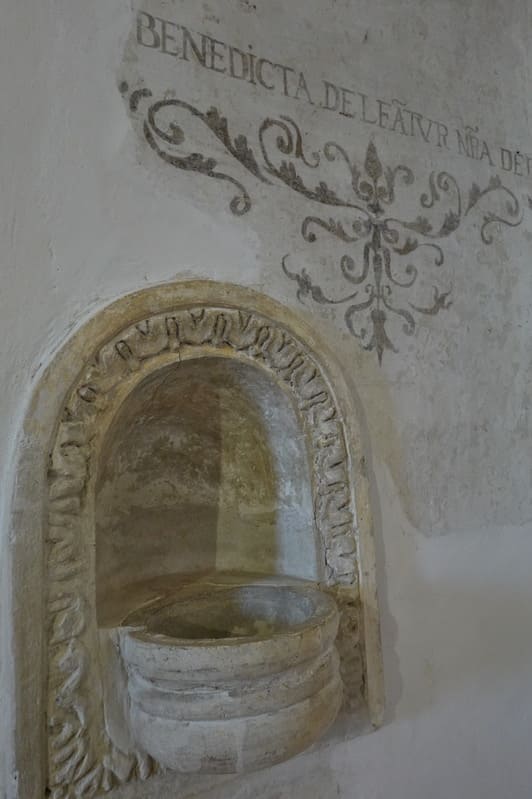
Also nice was the original stained glass window, that’s what most medieval windows looked like…

But the most beautiful part of this building could be seen in the crypt: the remains of the original part from the 6th century, a whole cycle of frescoes about the life of Saint Andrew, painted again by the Salimbeni brothers. Exactly a comic strip that didn’t get completely finished. Remarkable that you could admire the frescoes up close and notice the details.
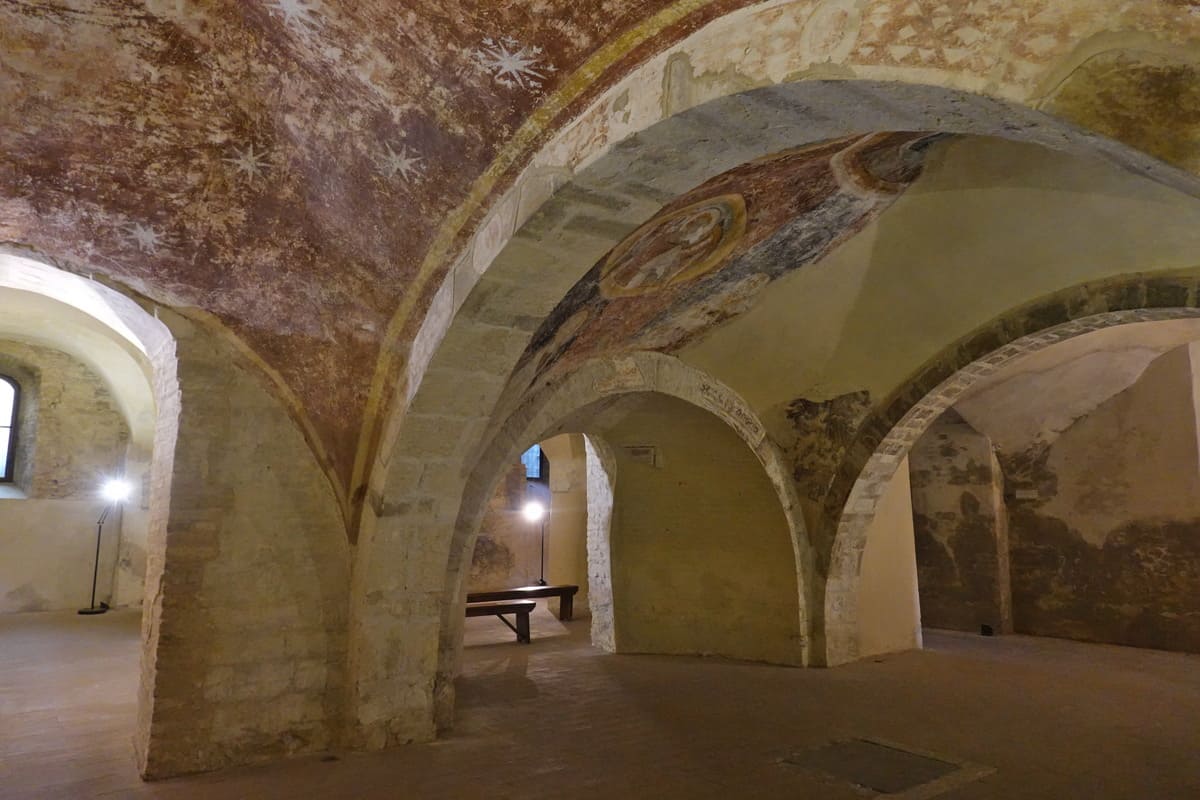
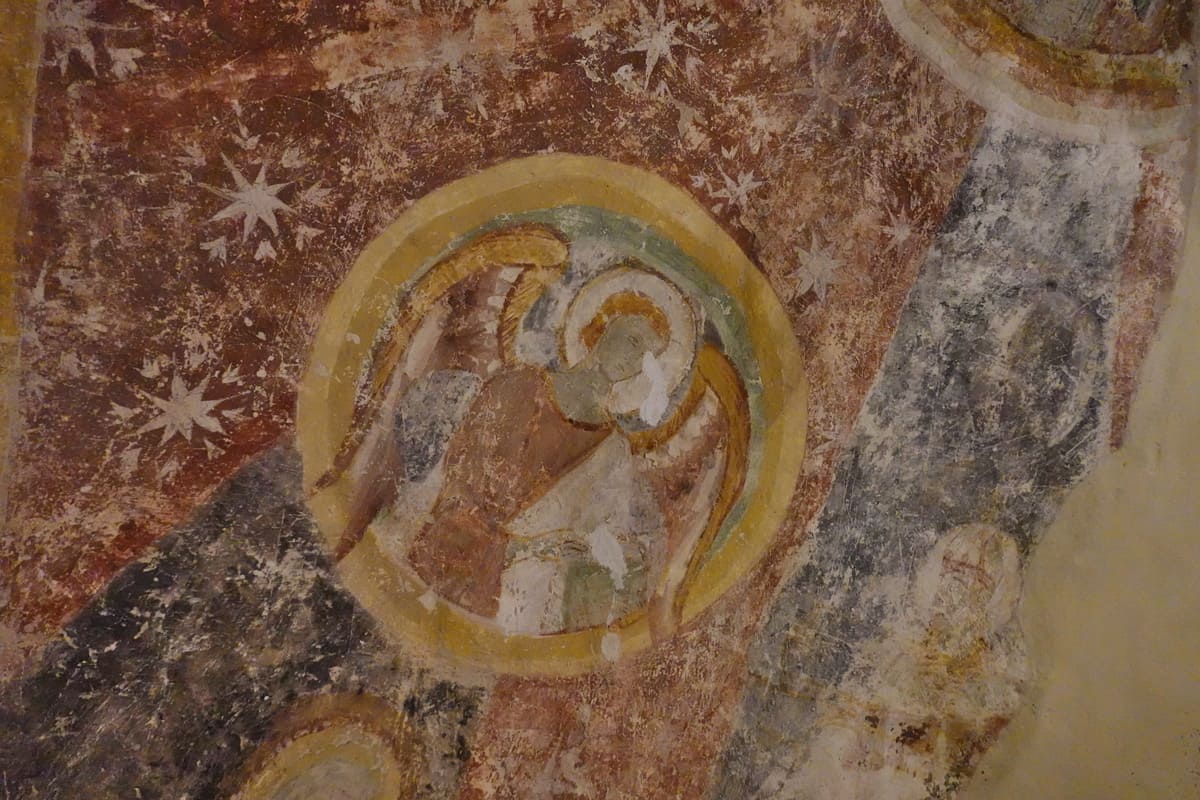


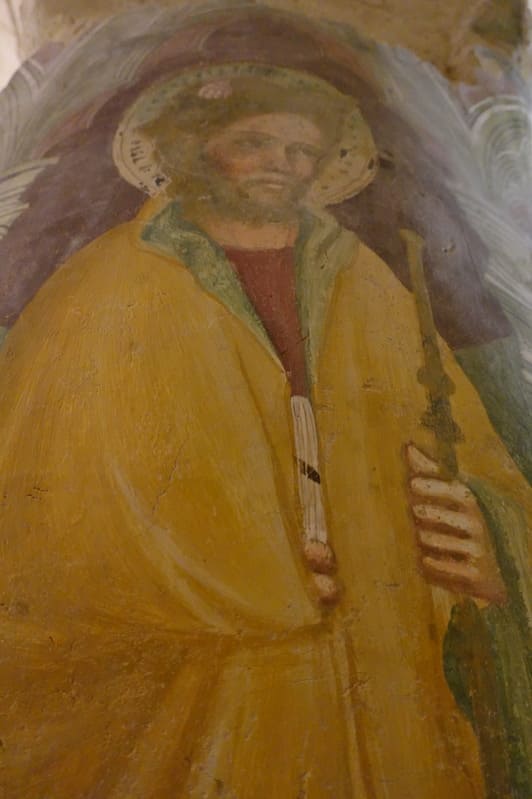

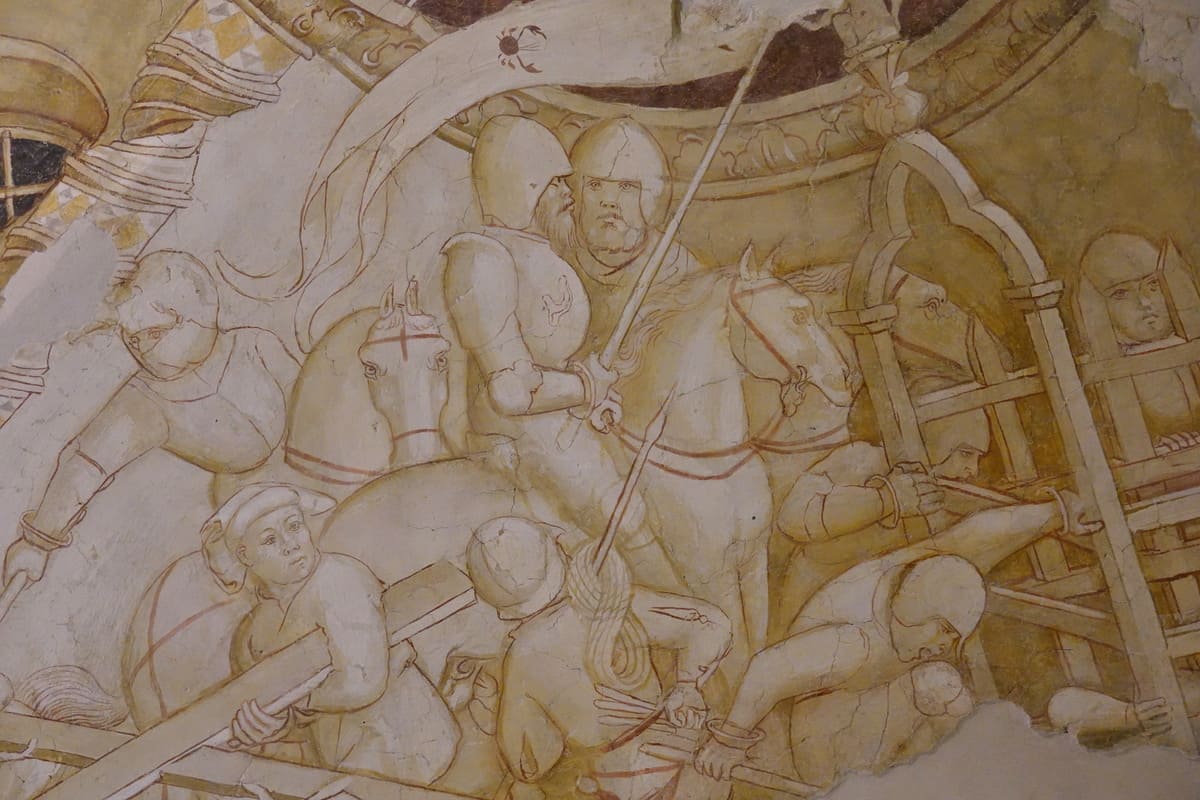

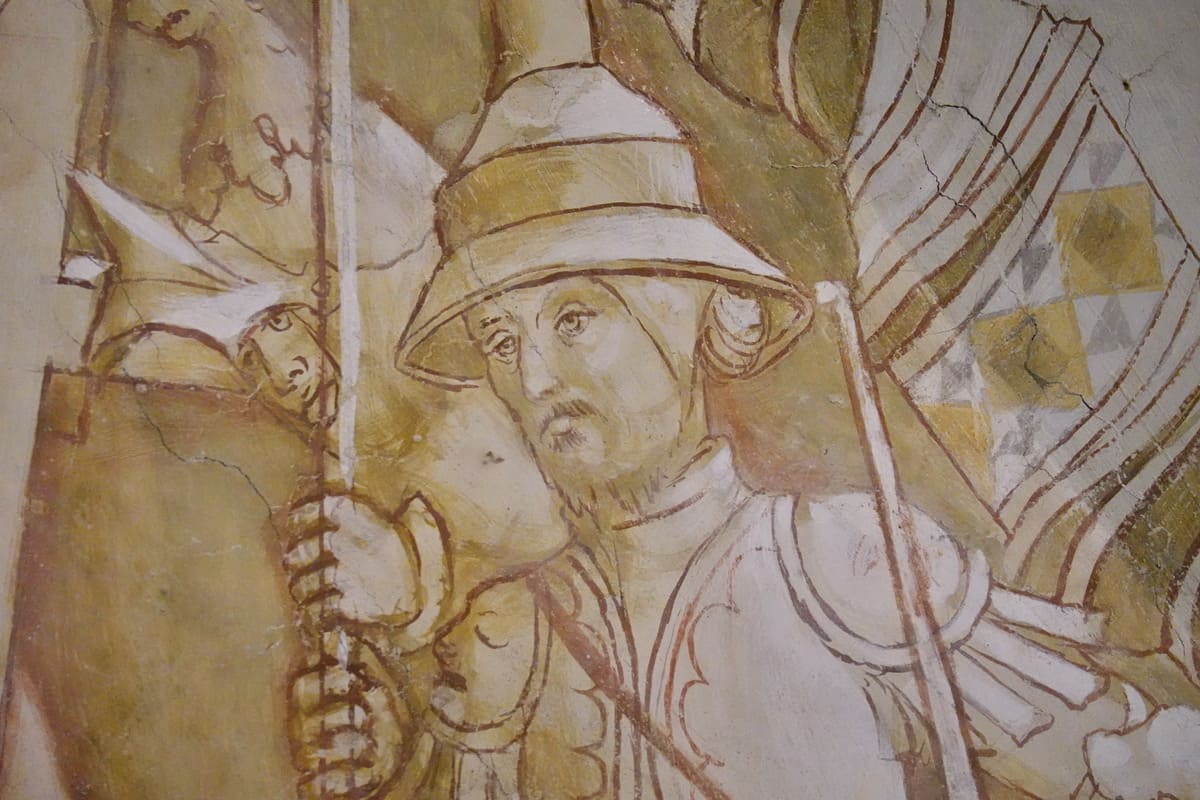
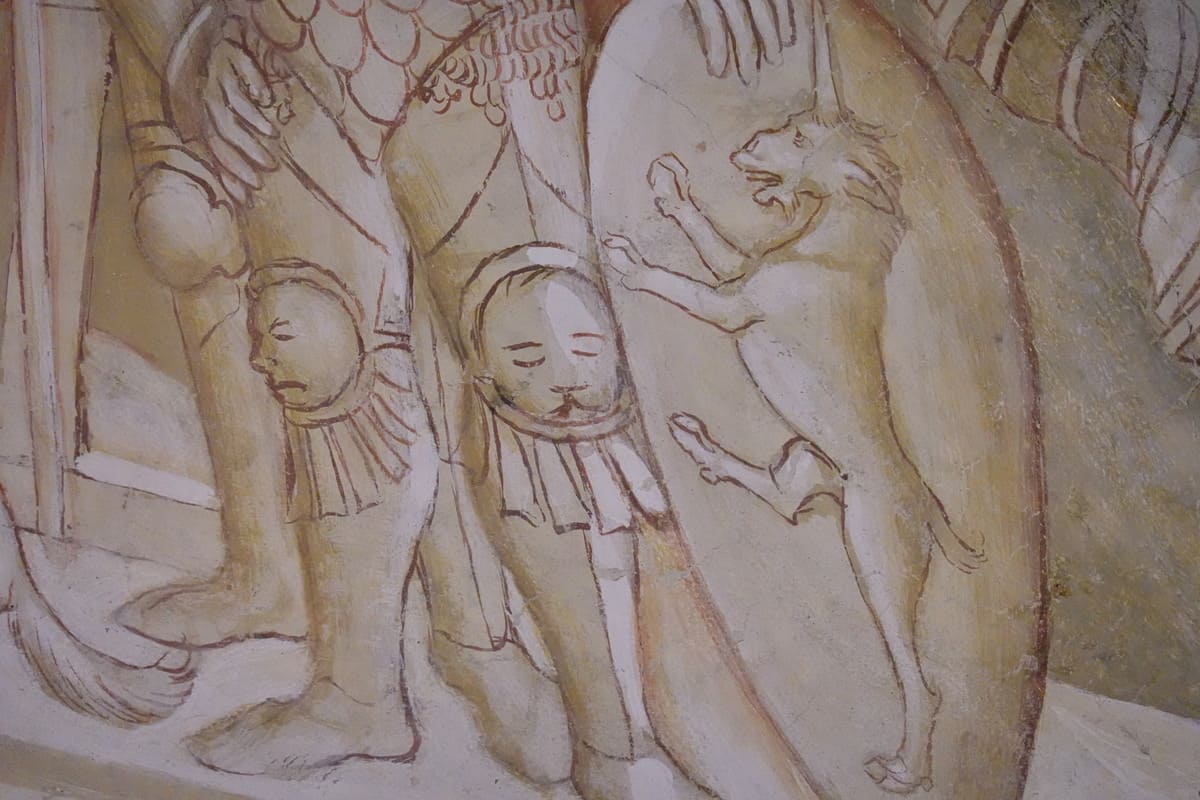
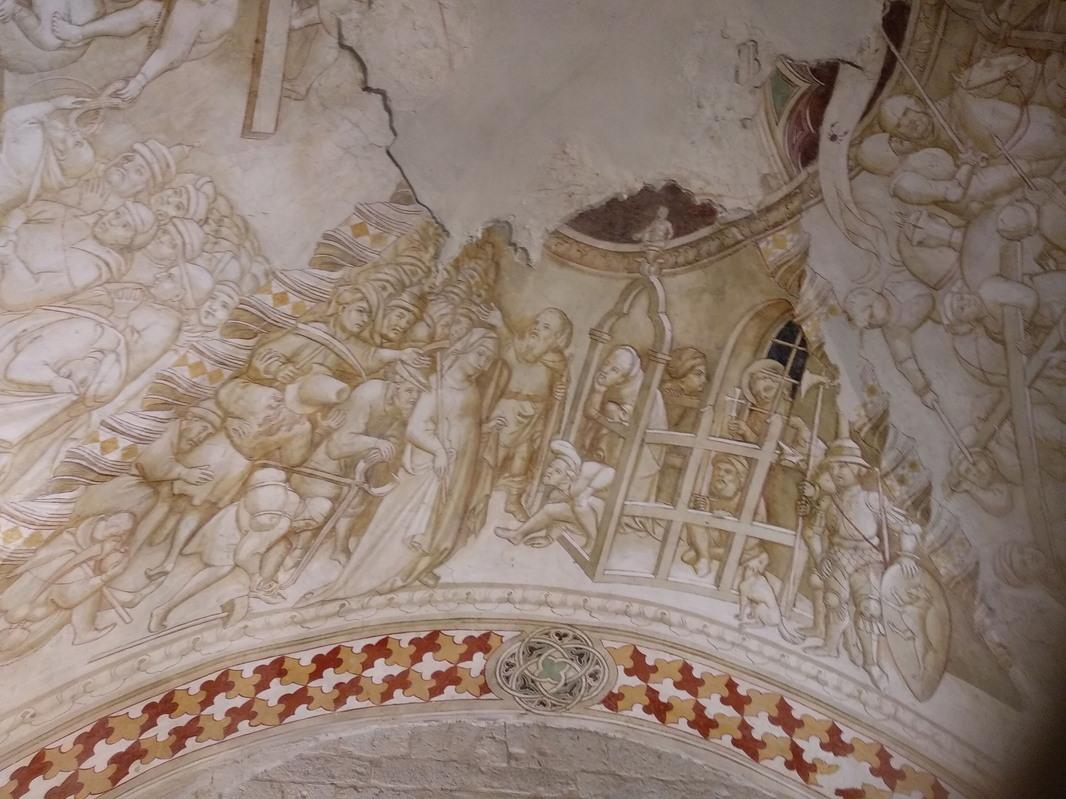
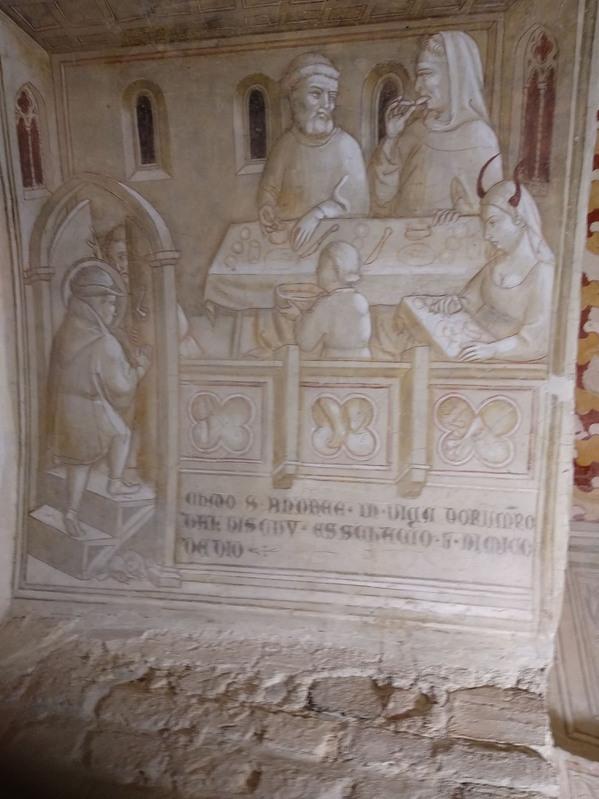
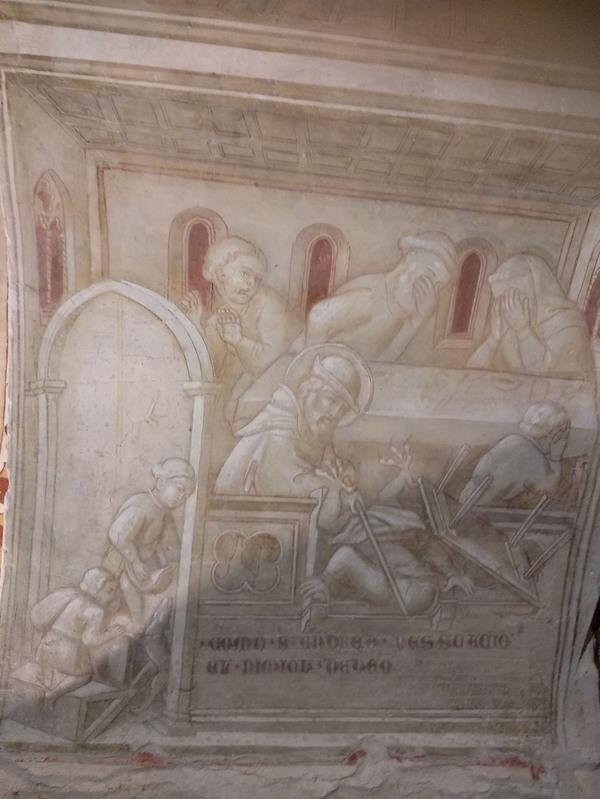
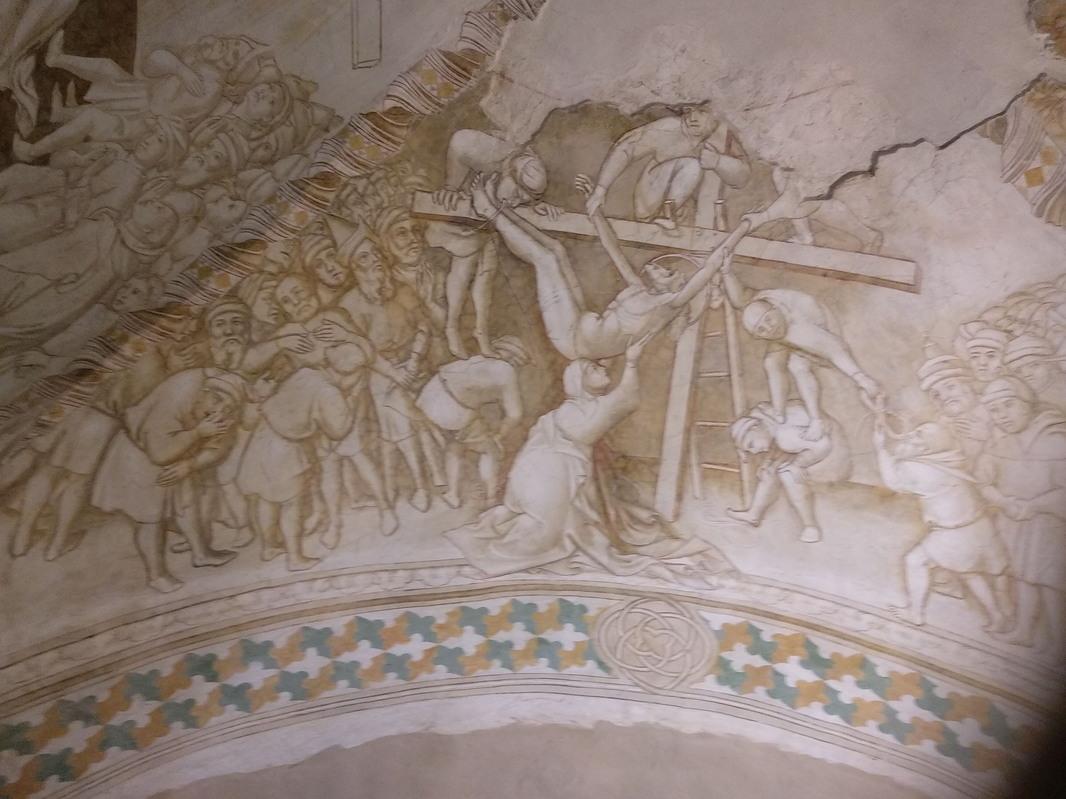


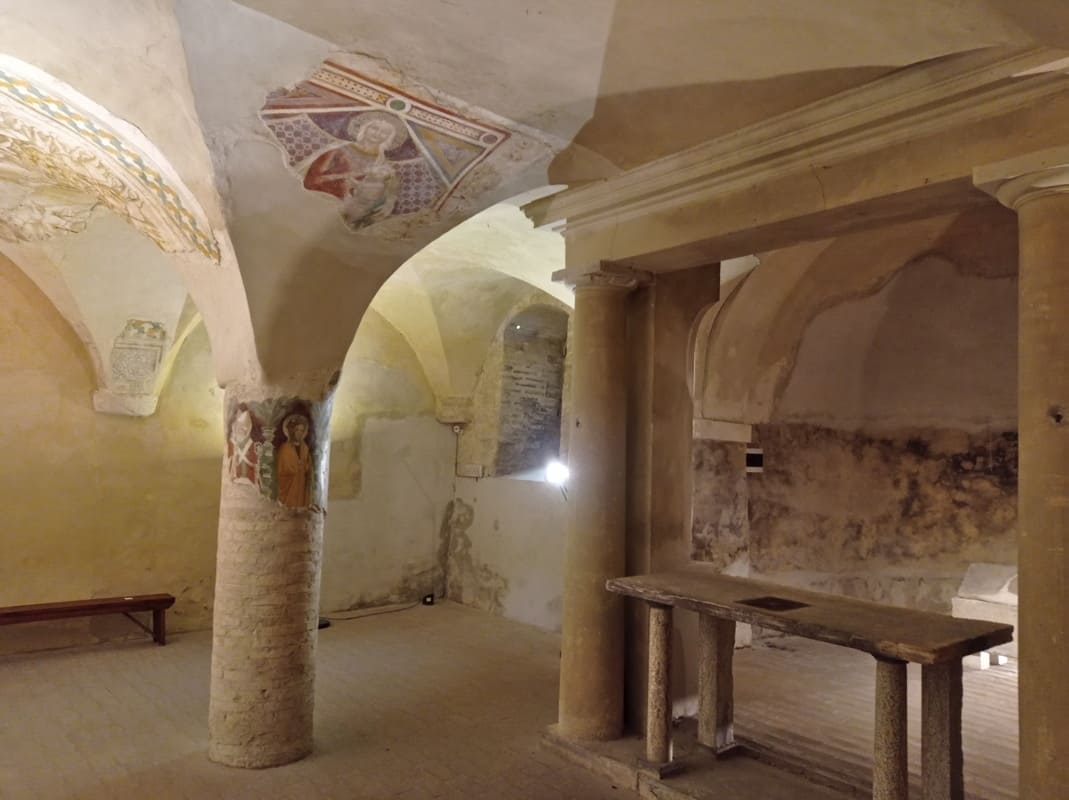
We left the crypt, looked at the old baptismal font from the 16th century at the entrance and went outside.
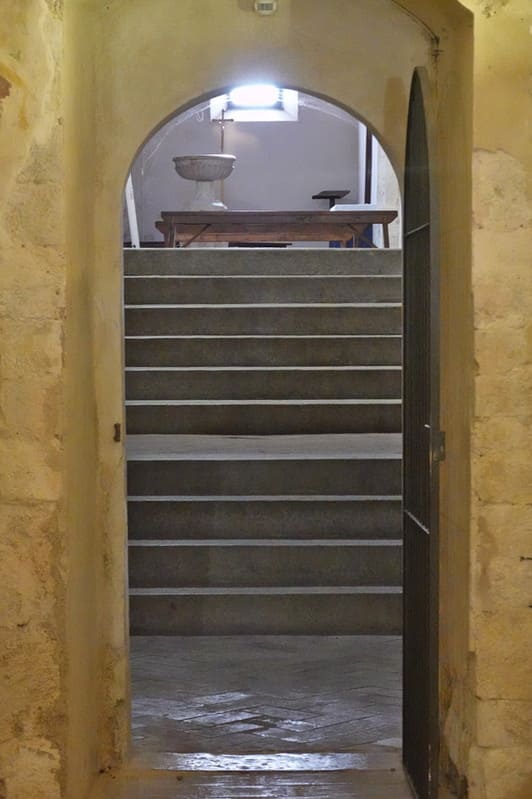
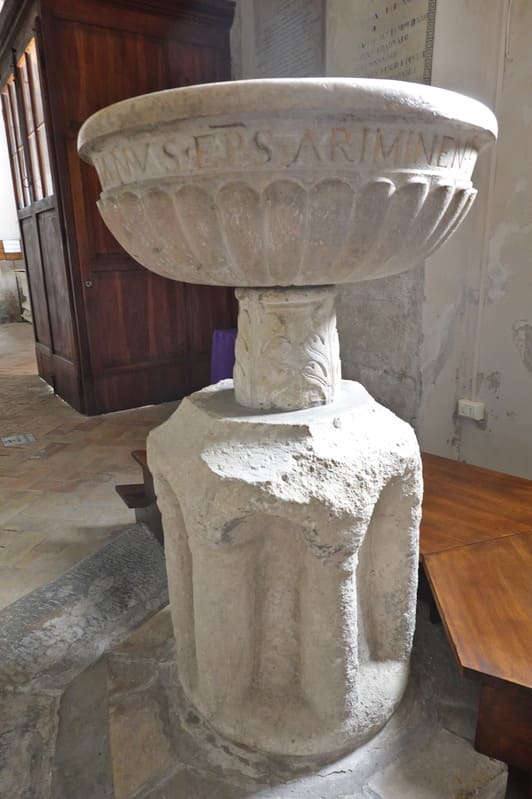

Now we walked on the Via delle Piagge on the outside of the town, where we faced a green hill. Beautiful alleys and vistas… up to the San Rocco Church

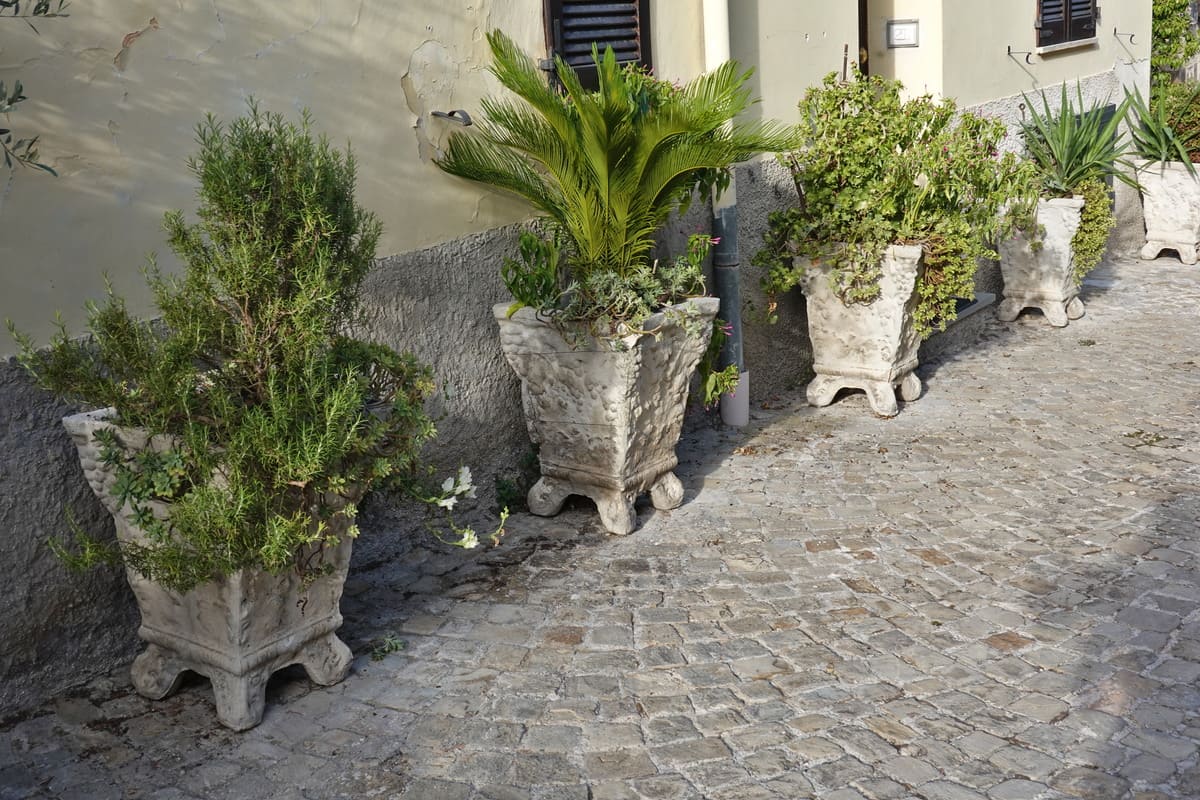
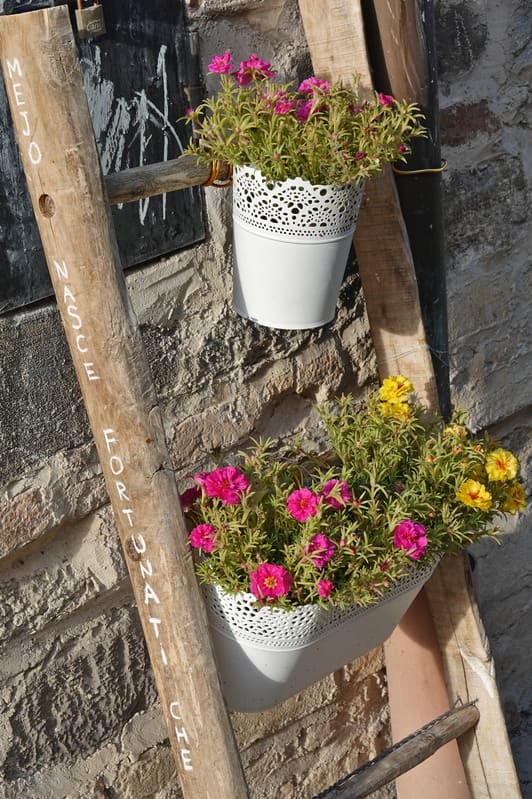

Opposite the church we walked into the alley to the San Filippo church. To then turn right into the first alley in Via Pacifico Indivini, a nice climb until we arrived at a crossroads.

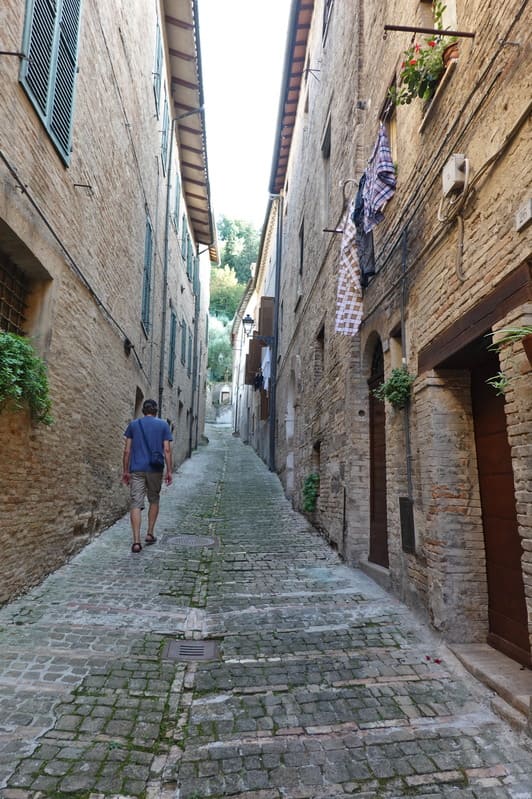
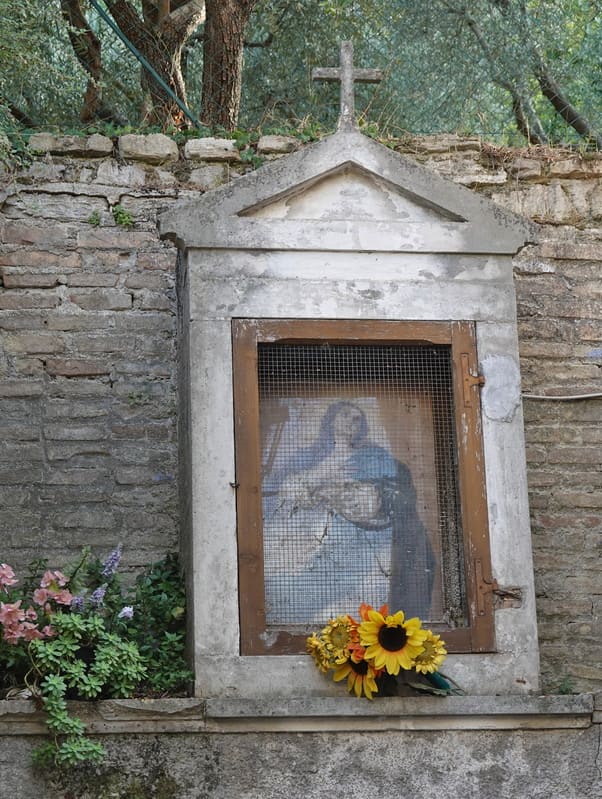
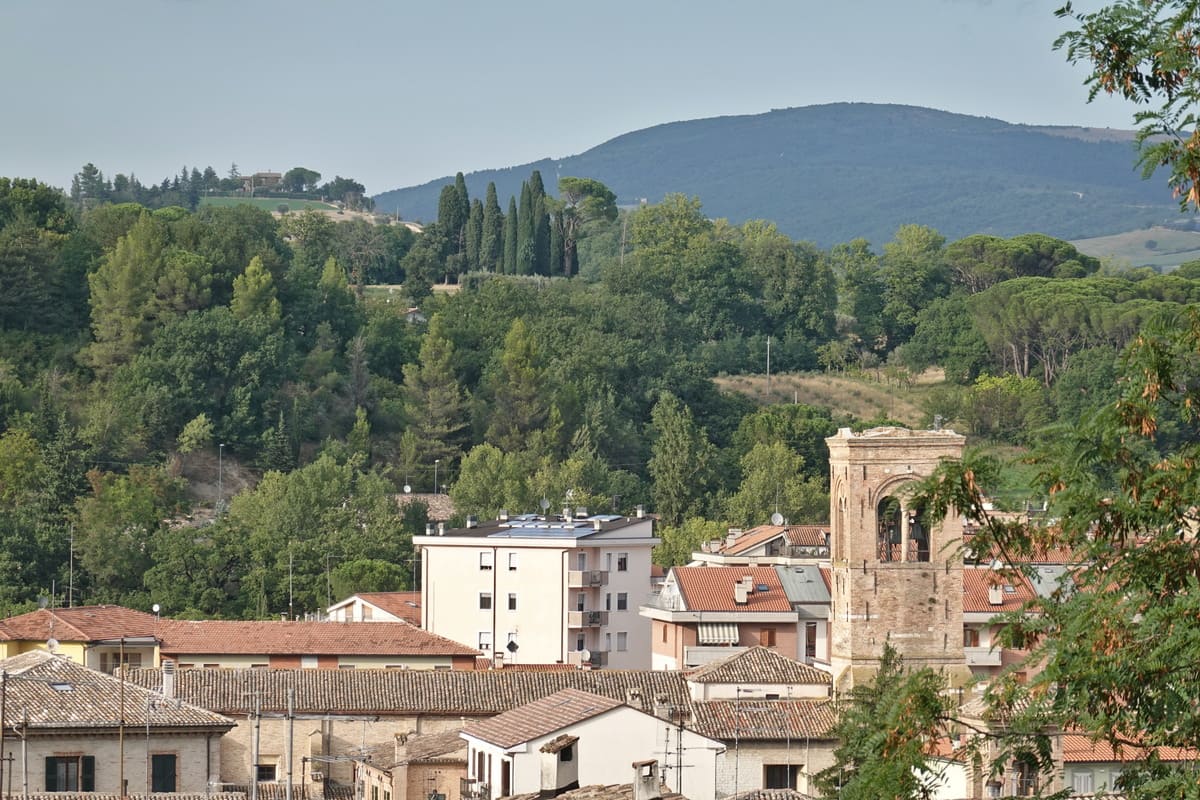
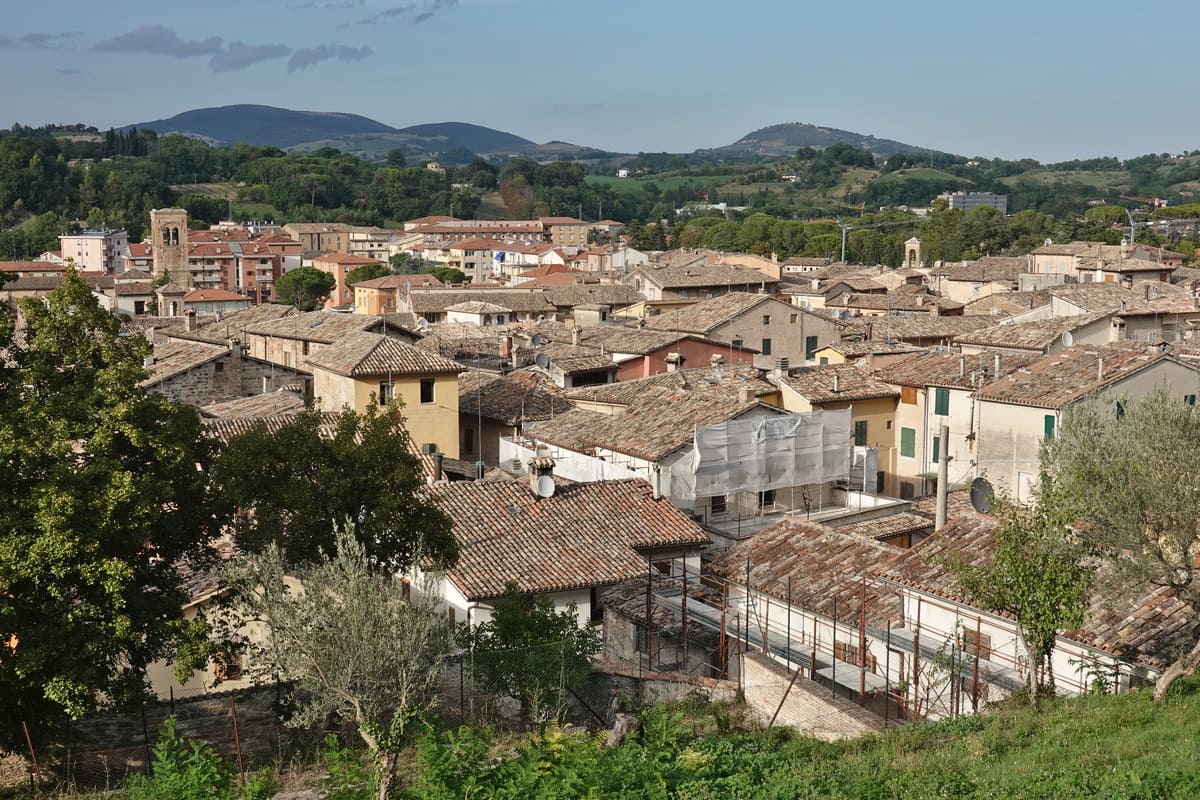
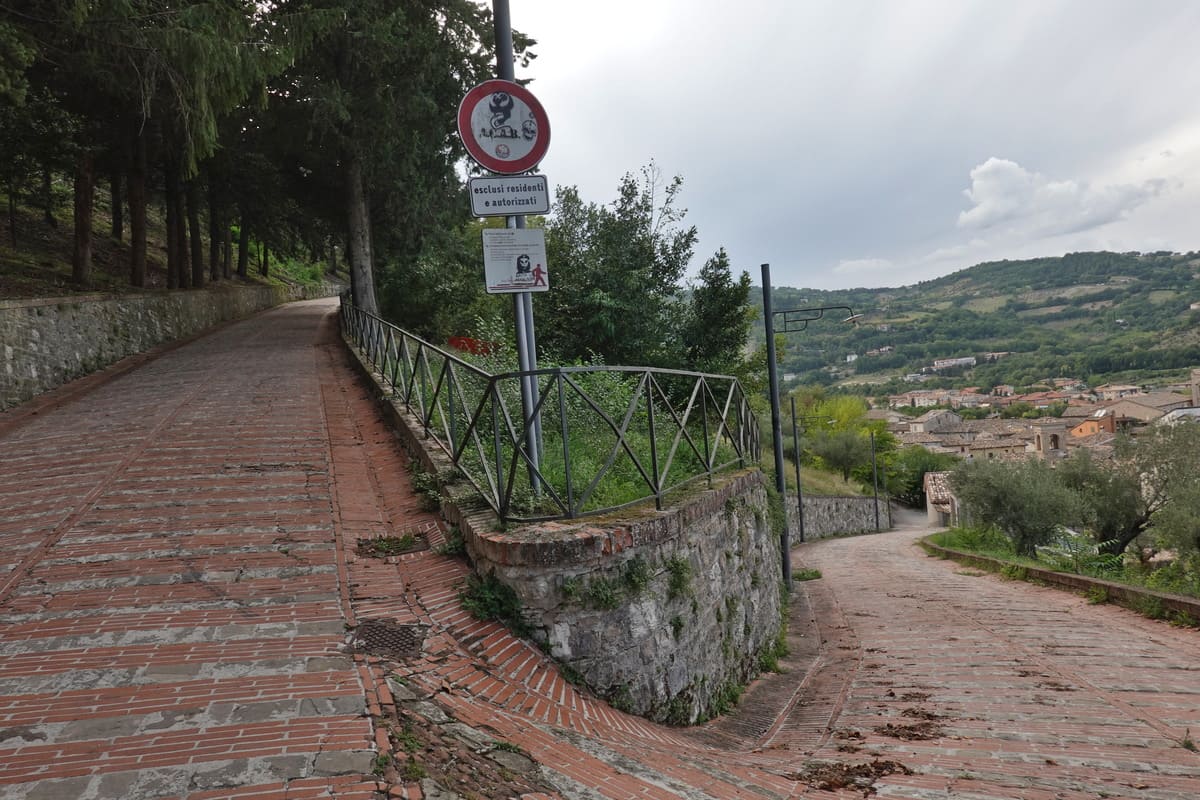
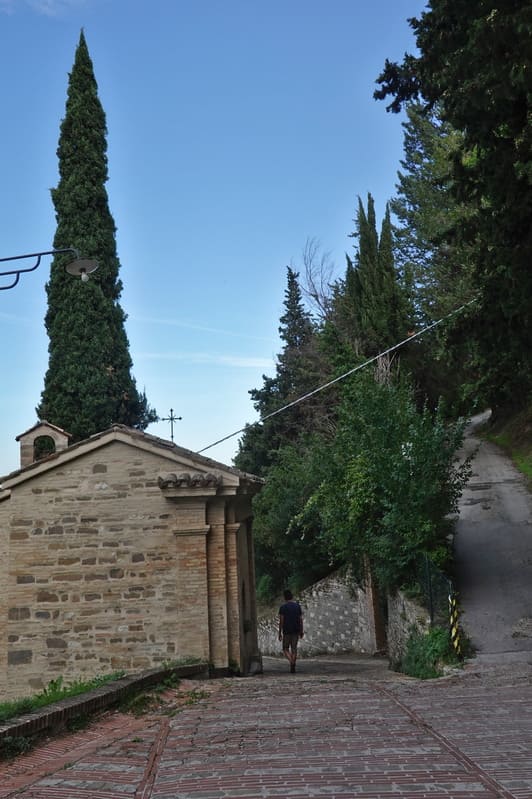
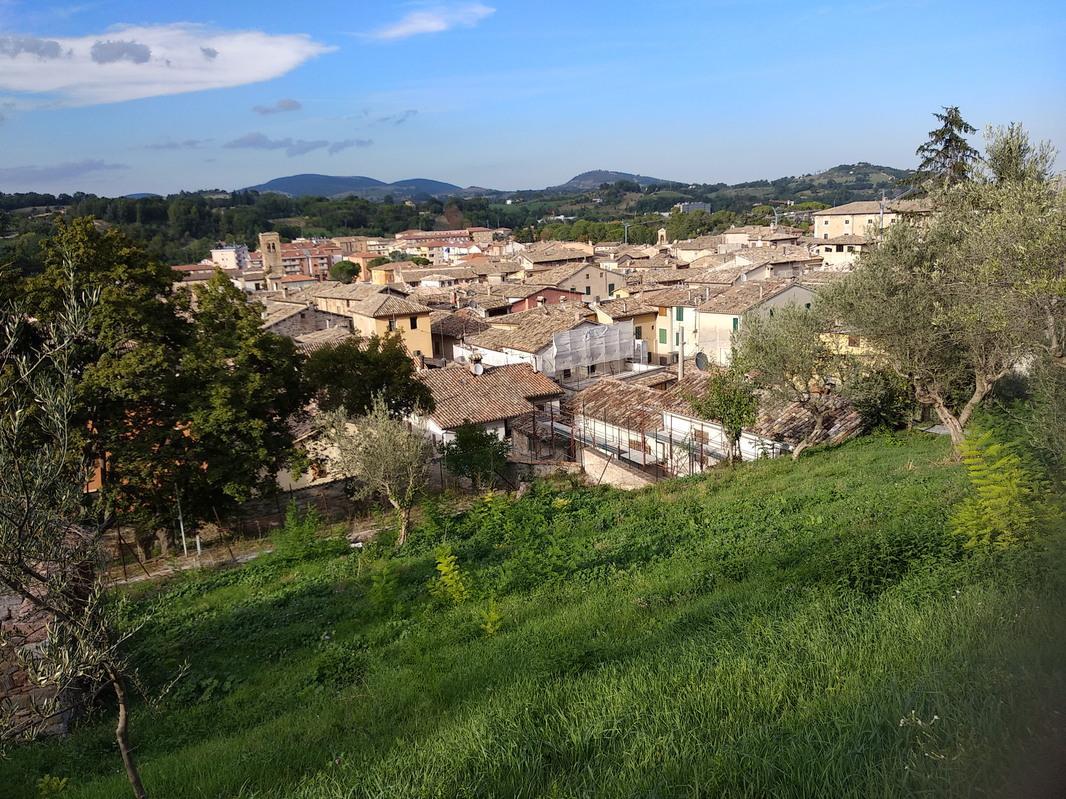
Up to the right you ascend to San Severino Alto, the oldest part of the city. We descended back to the center past the San Pitturetta church.
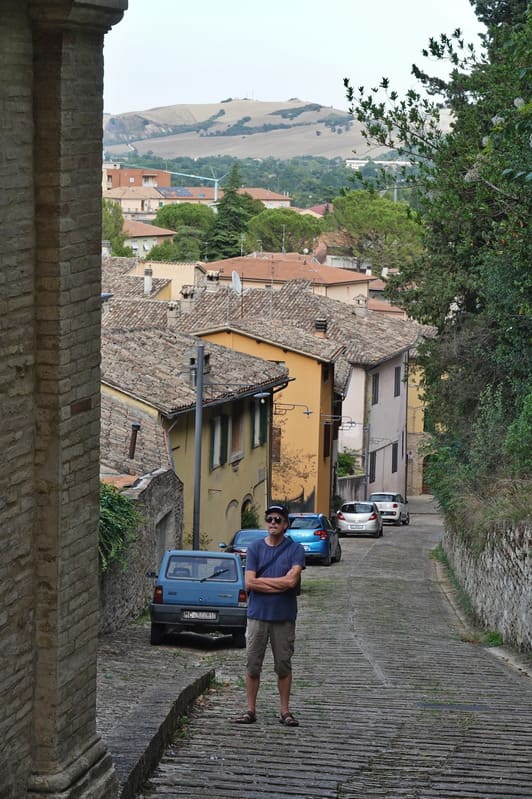
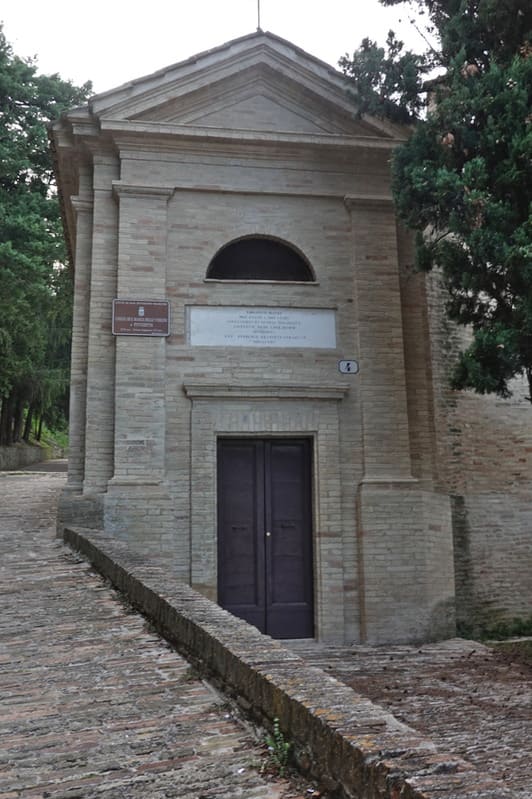
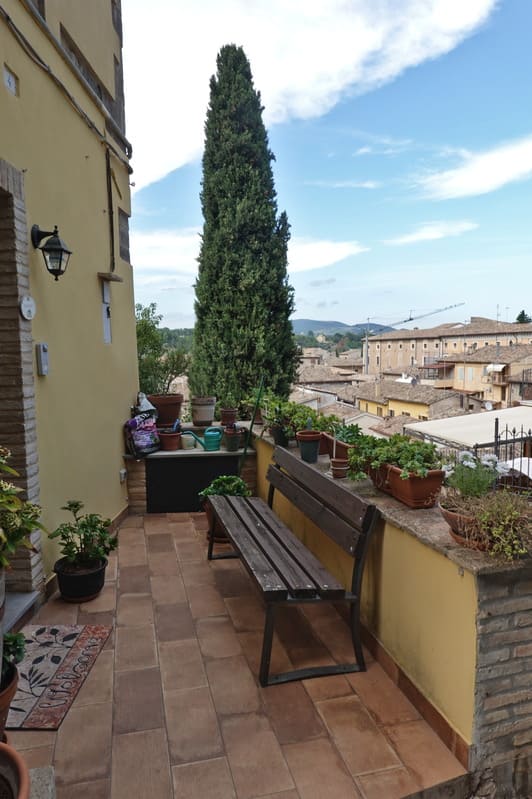

Arriving at the Isola Fountain, we turned left into Via Battisti, where we returned to Piazza del Popolo via the Bishop’s and Government Palace.
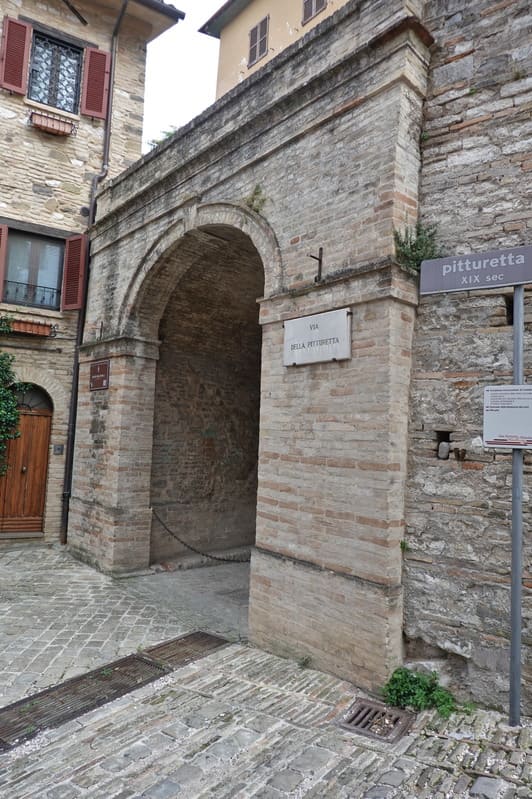
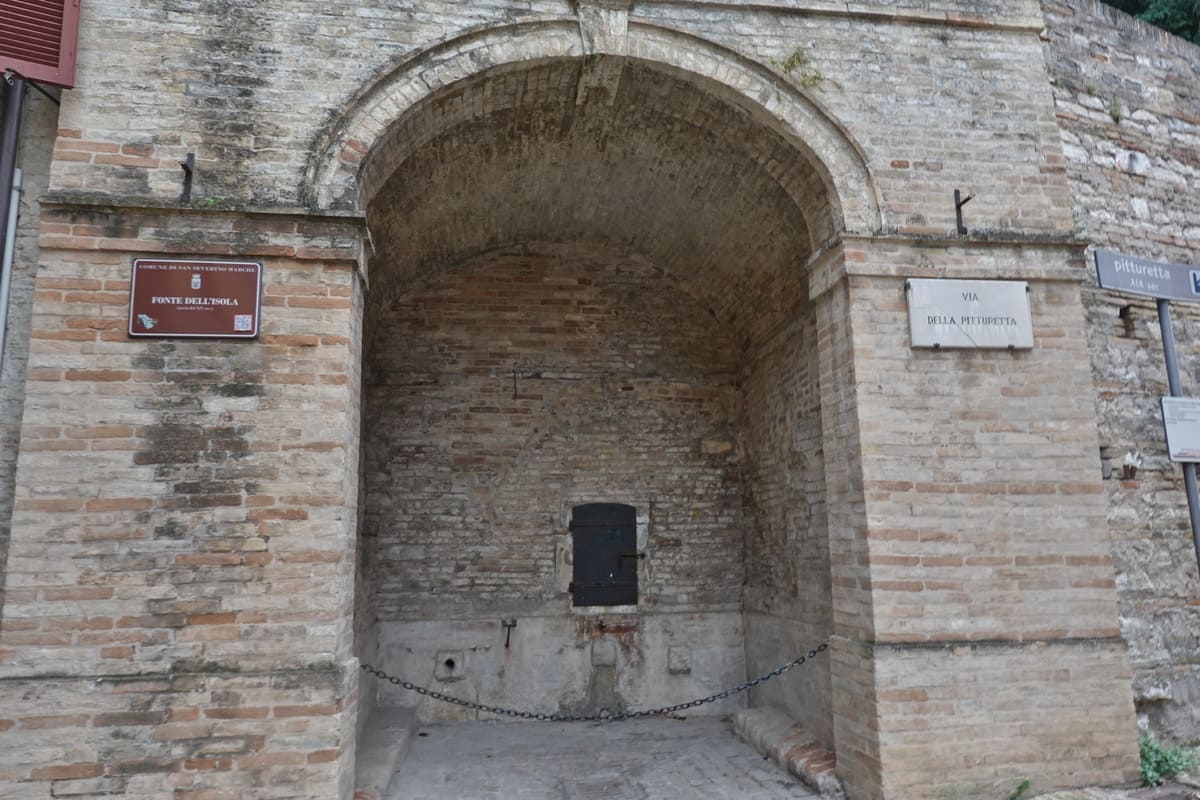
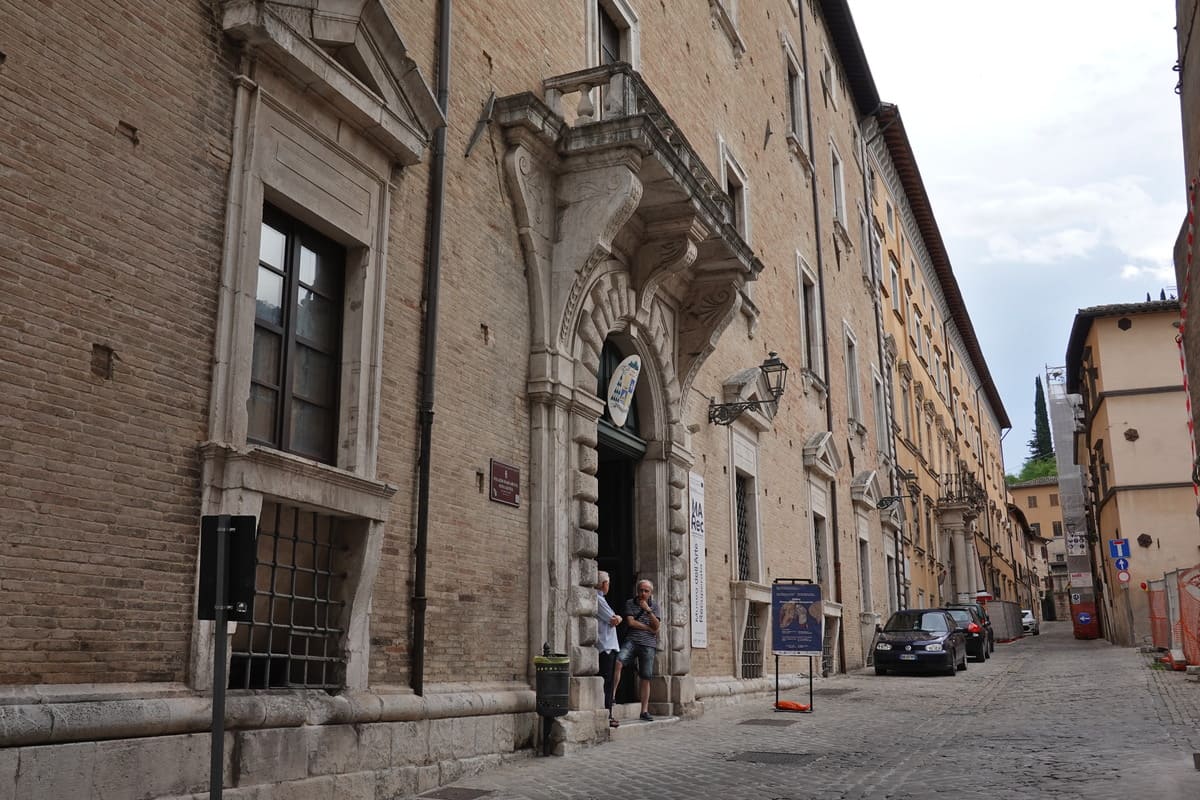
Time to sit on a terrace at Pino’s Bar for an aperitivo!

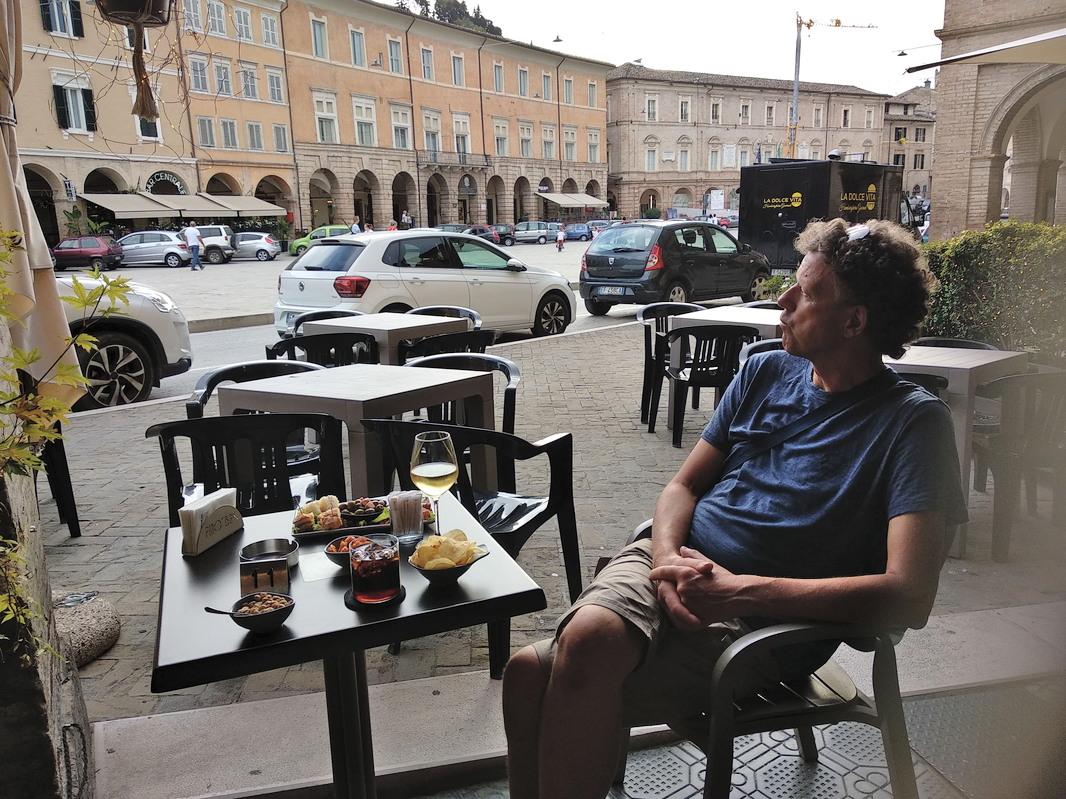
A little tip:
By the way, did you know that the Eustachian tube, the tube that connects the middle ear to the nasal cavity, was named after its discoverer Bartolomeo Eustachi, the physician who was indeed born in San Severino Marche? His bust adorns the front of the town hall.
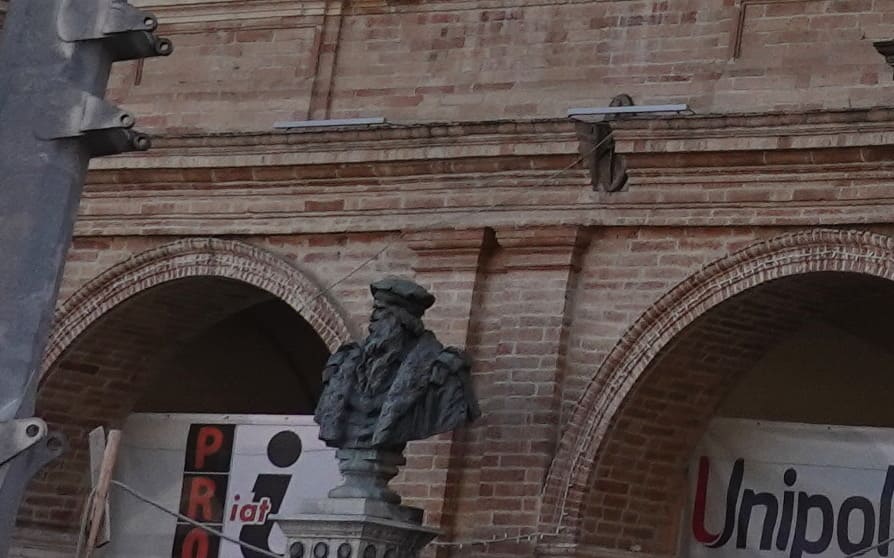
If you follow the line on the image, you can follow the entire route: the start coordinates.
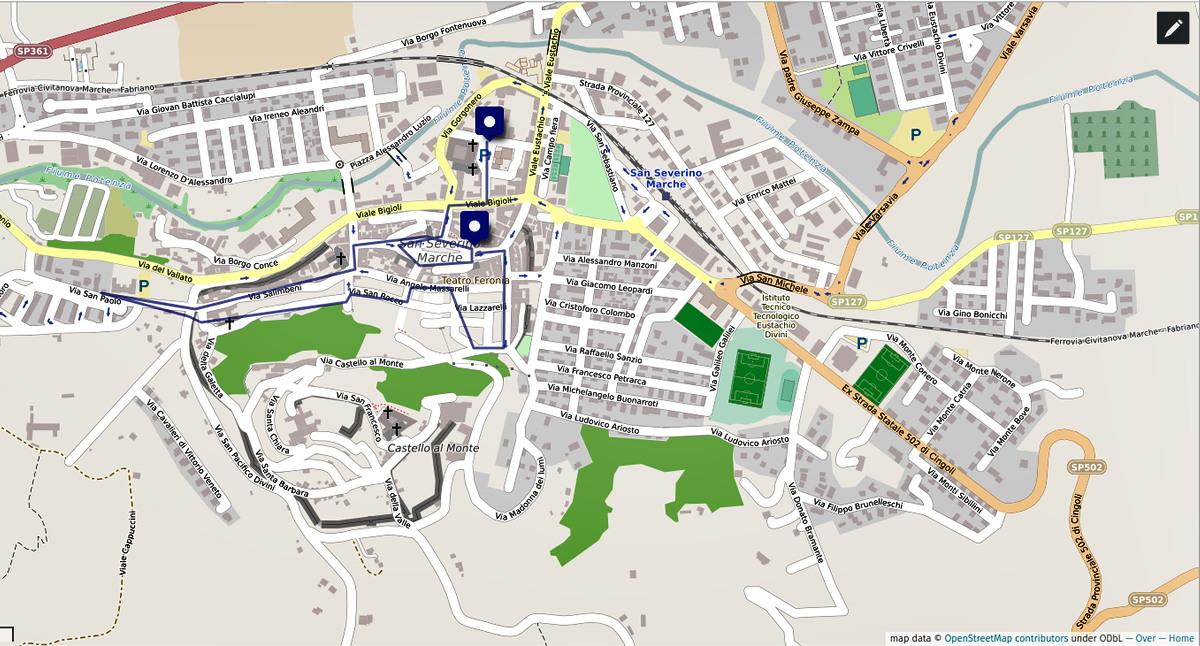
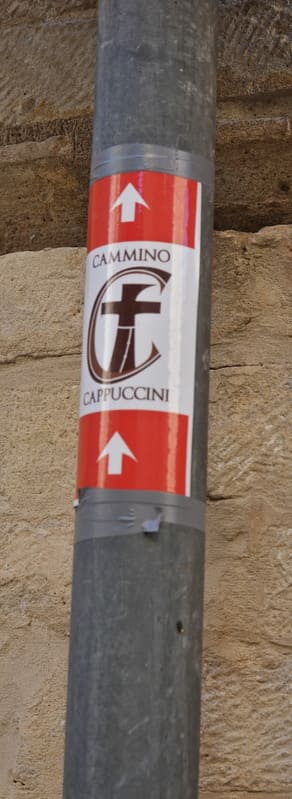

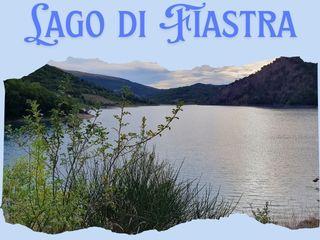

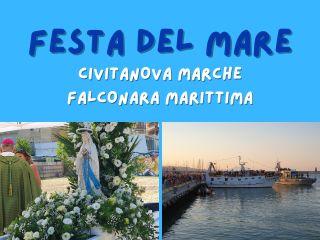
0 Comments